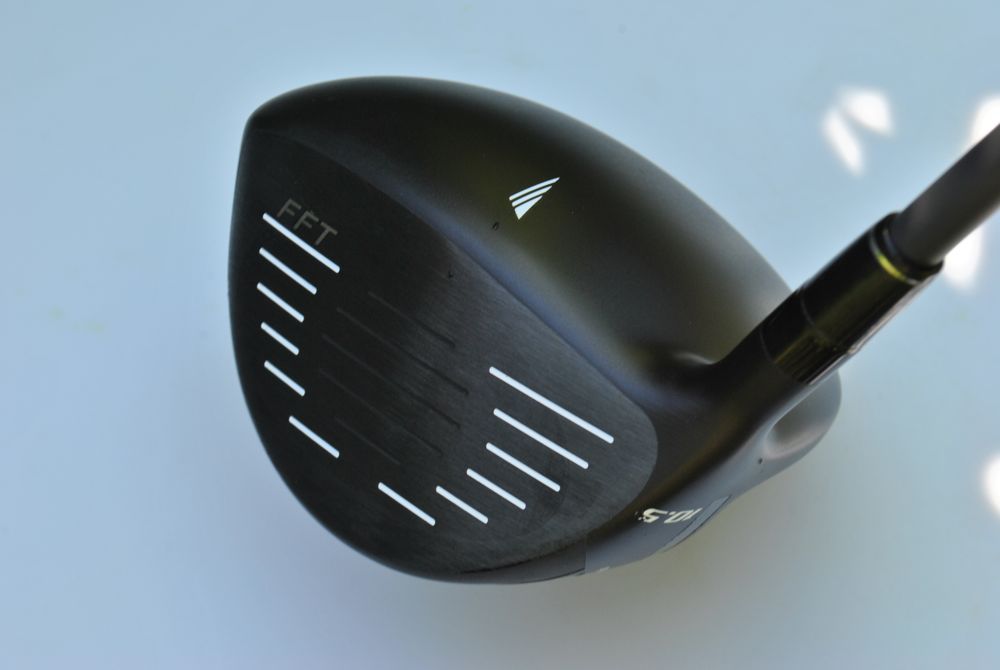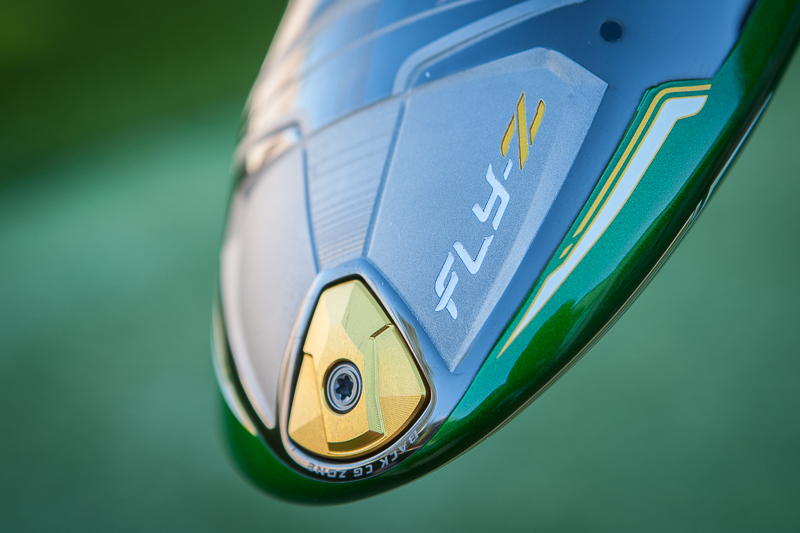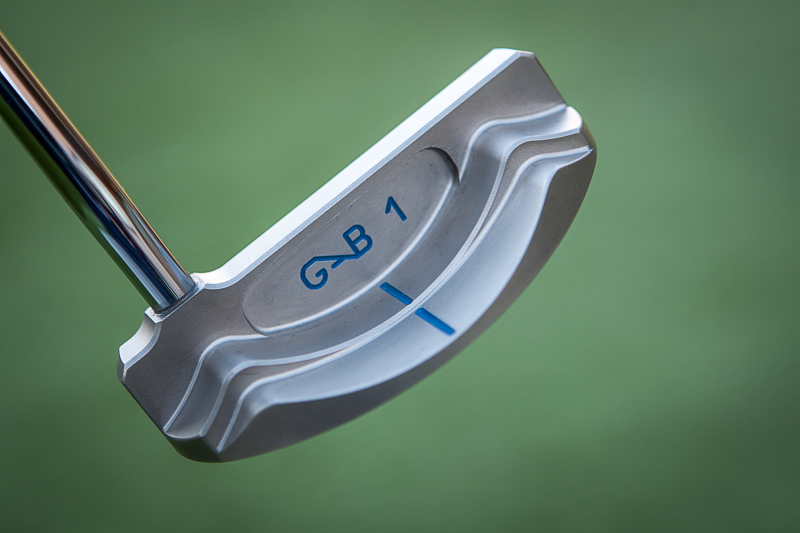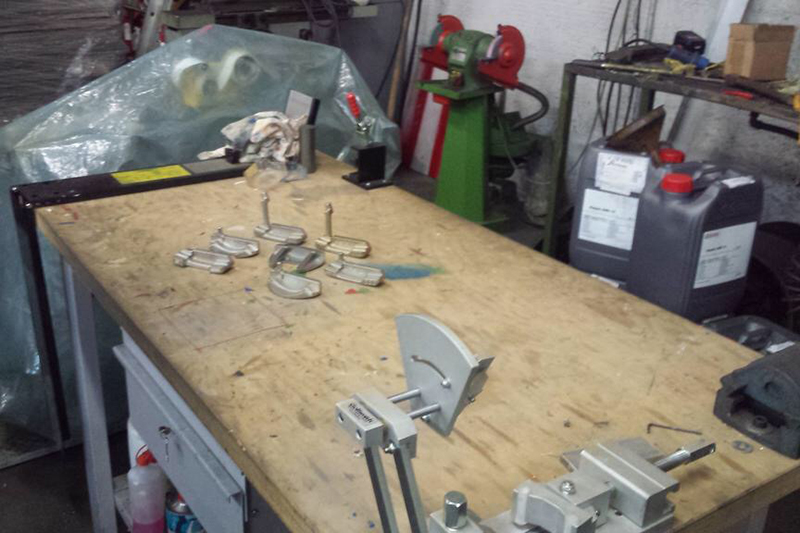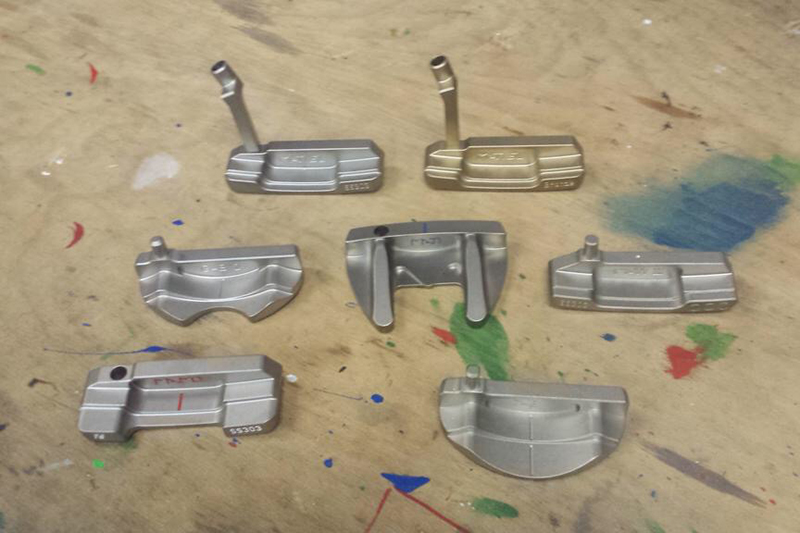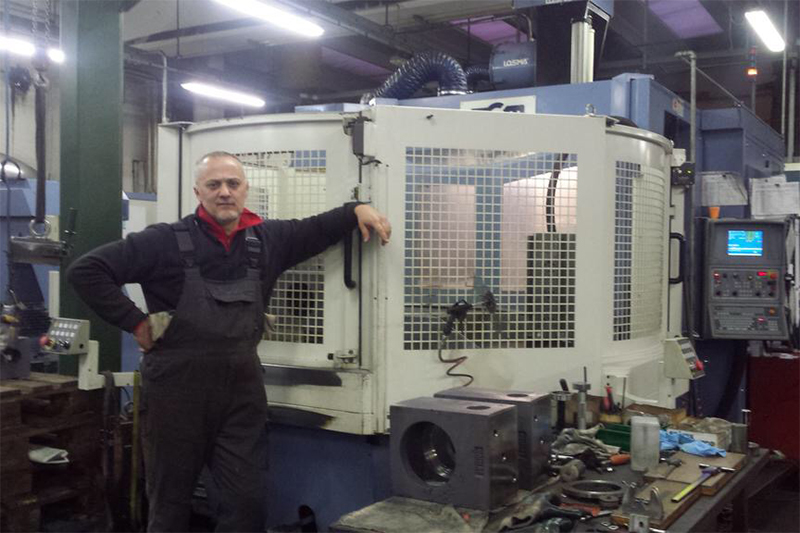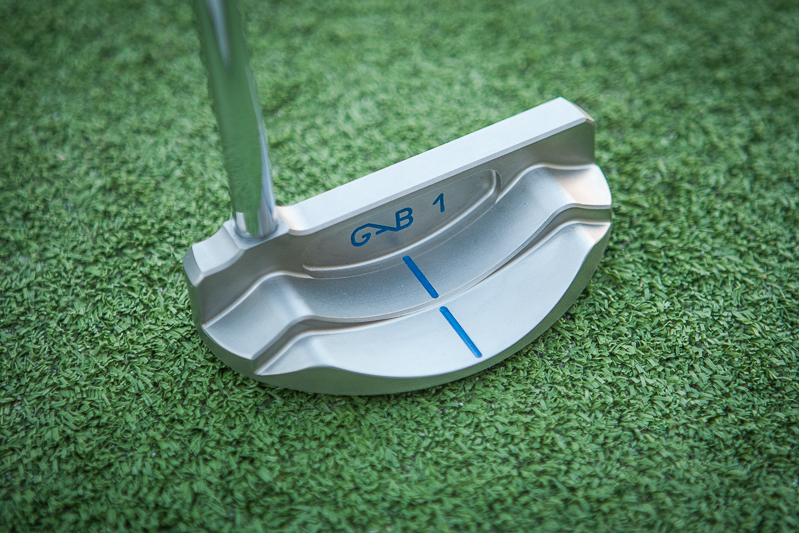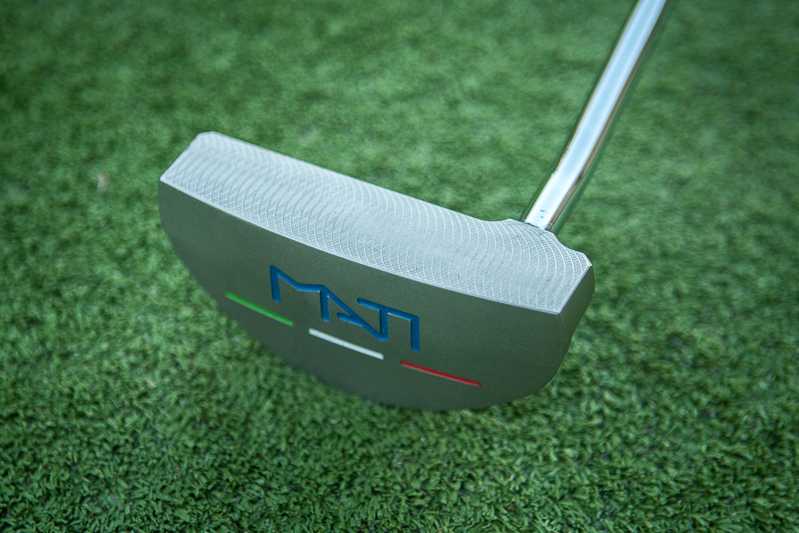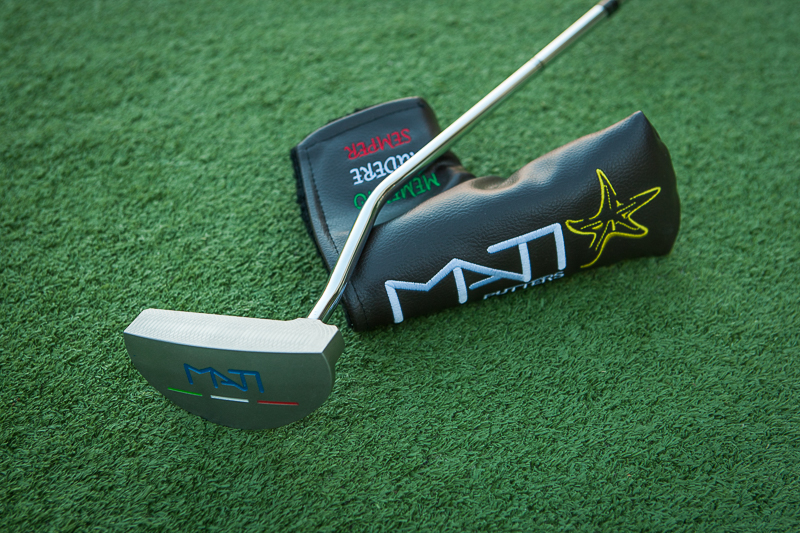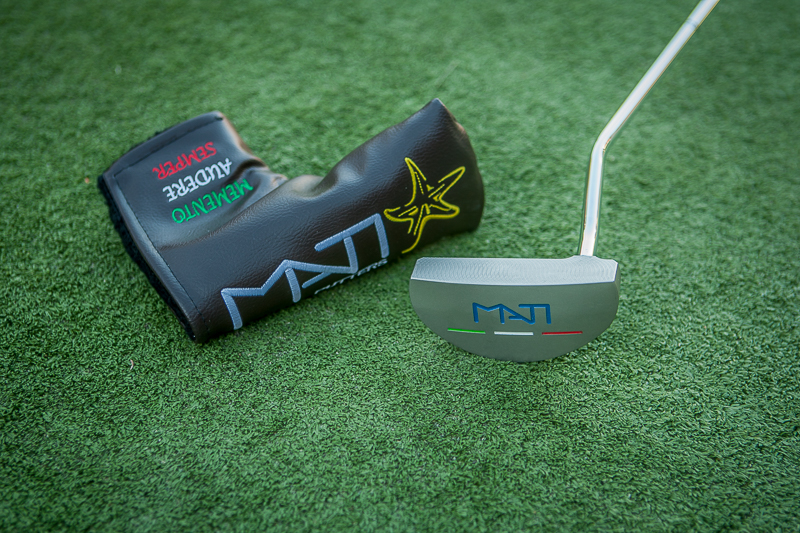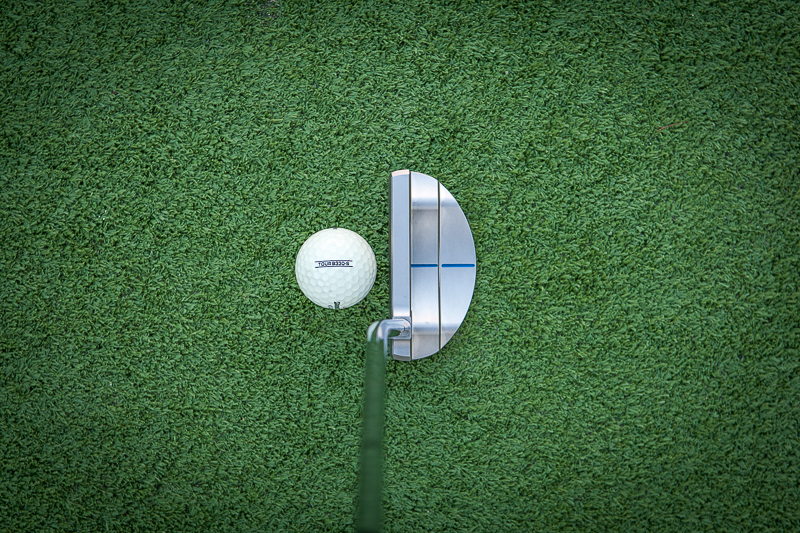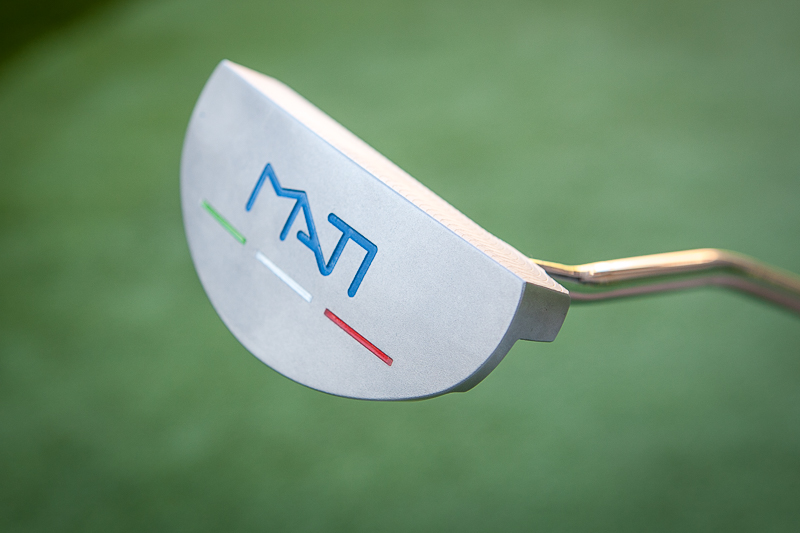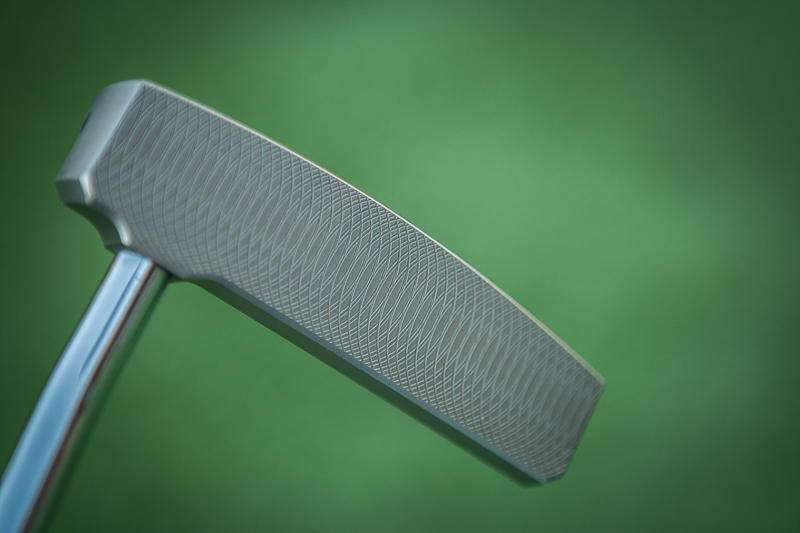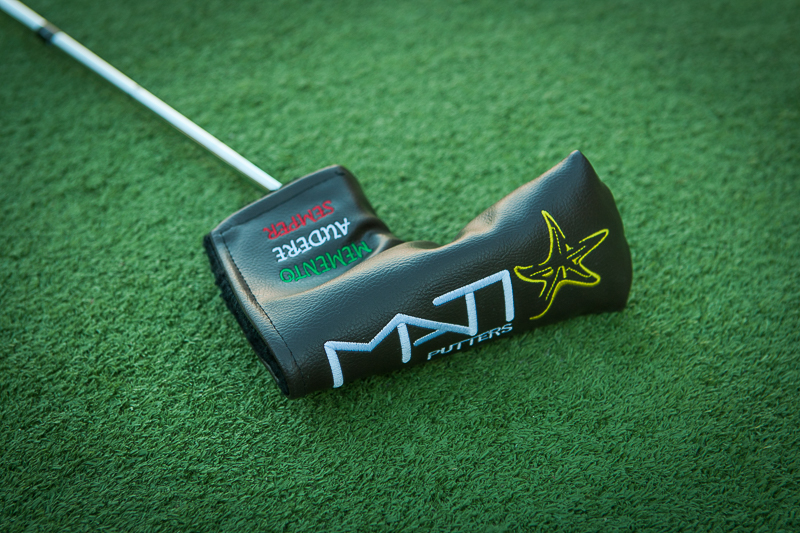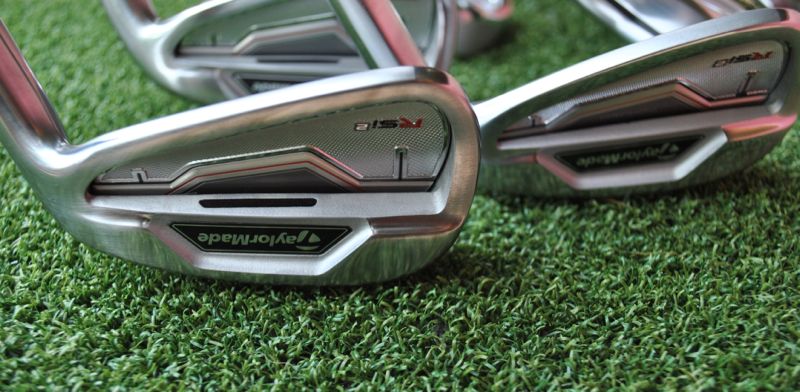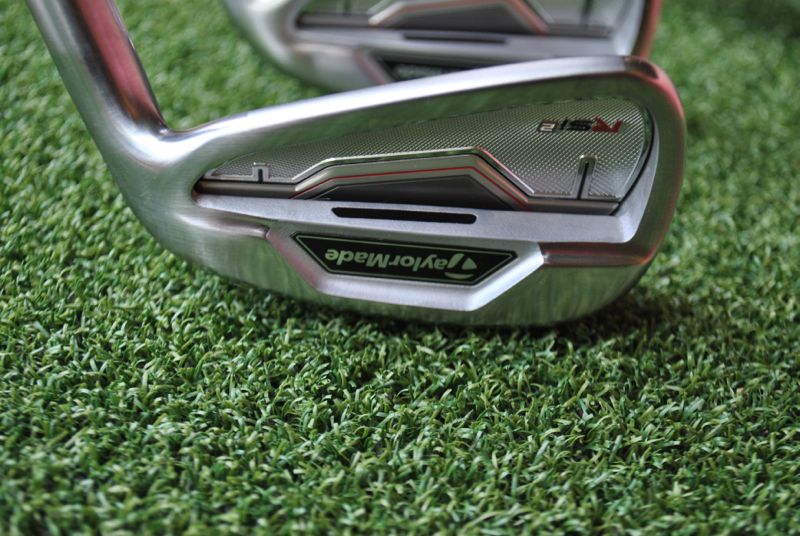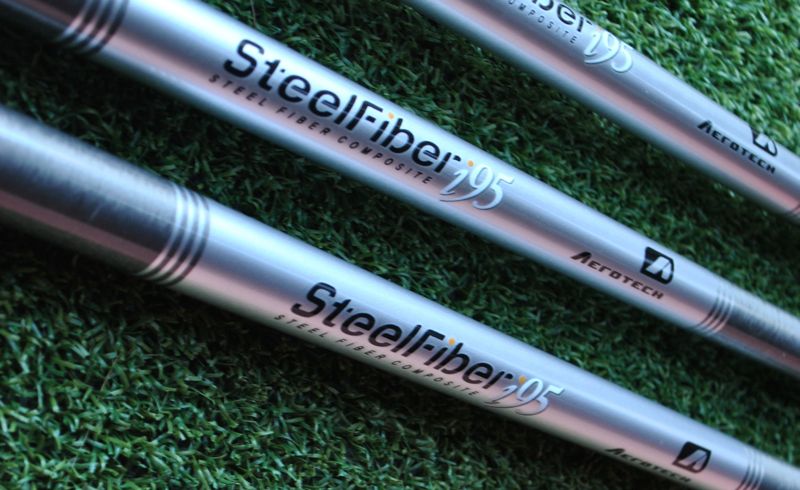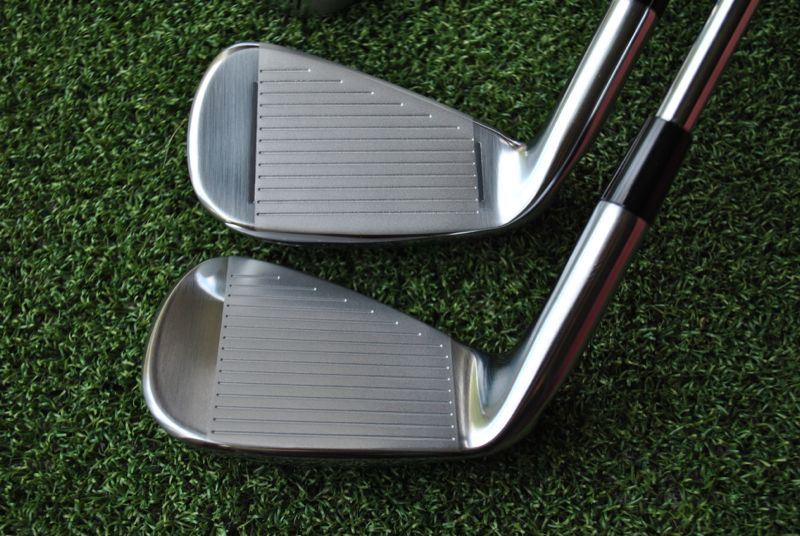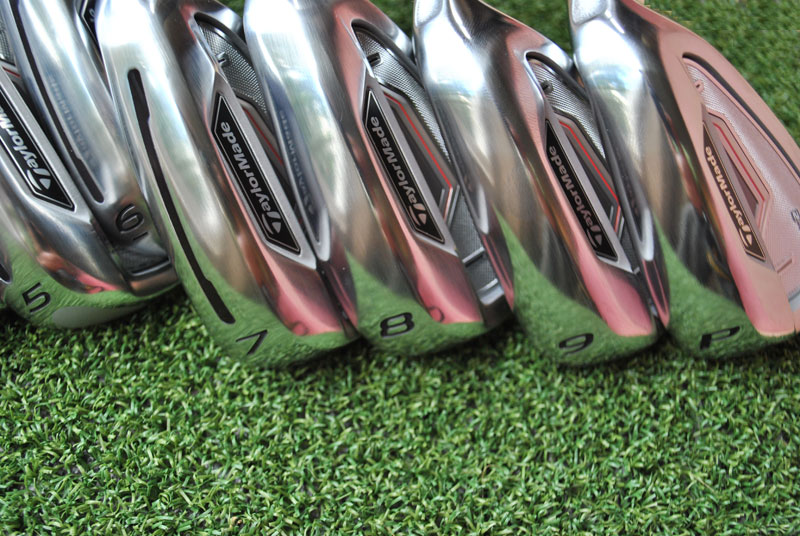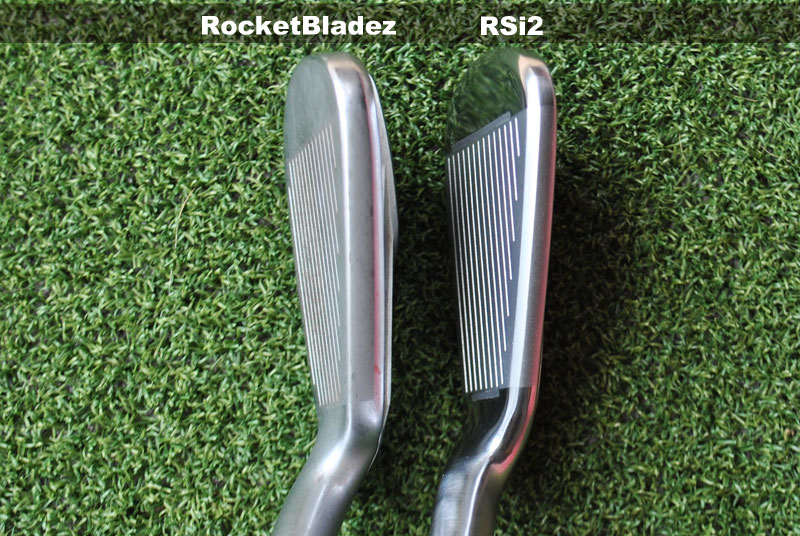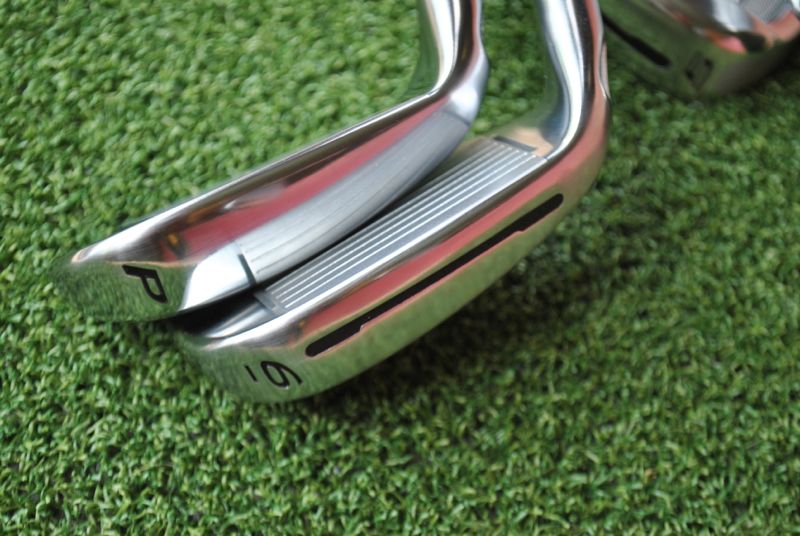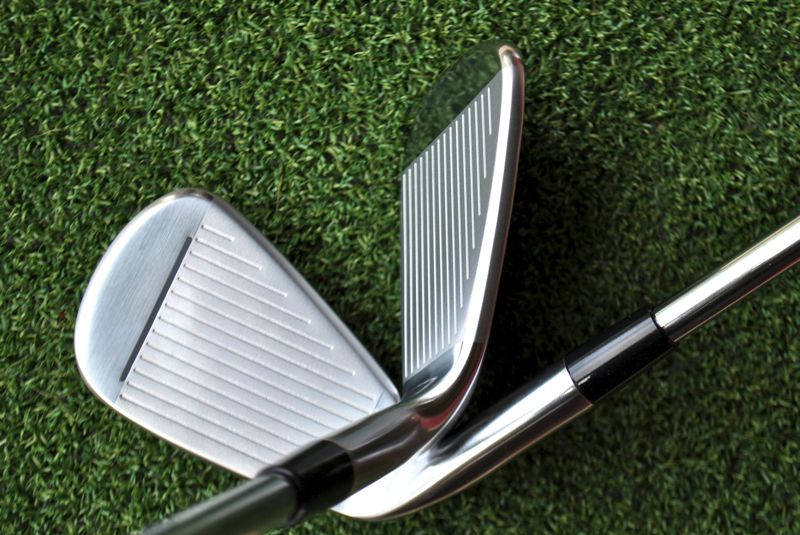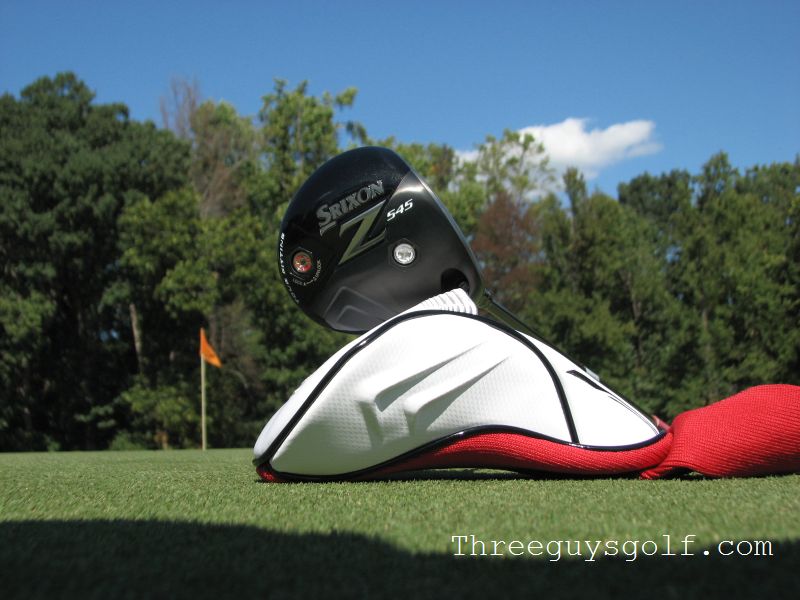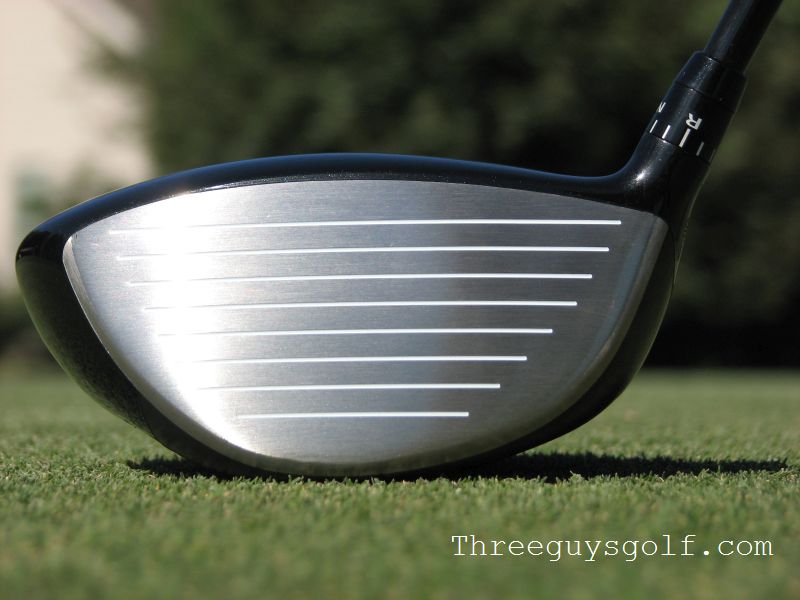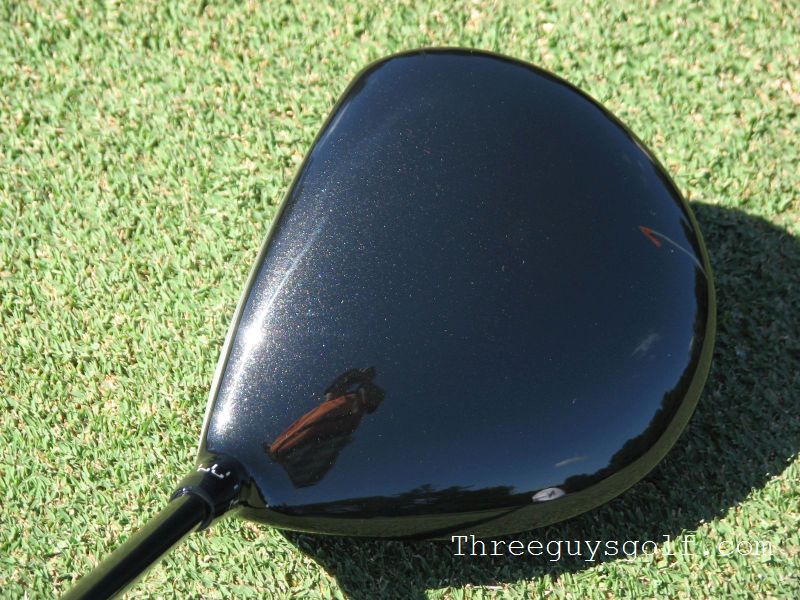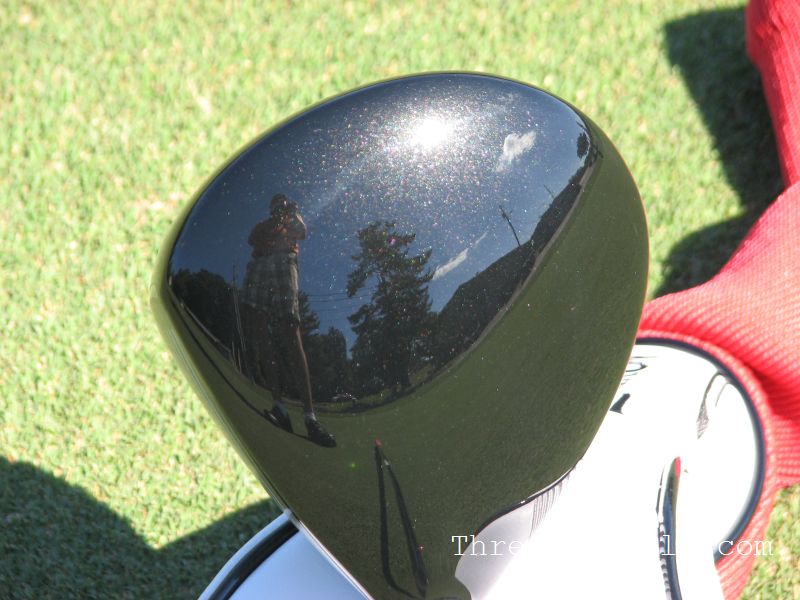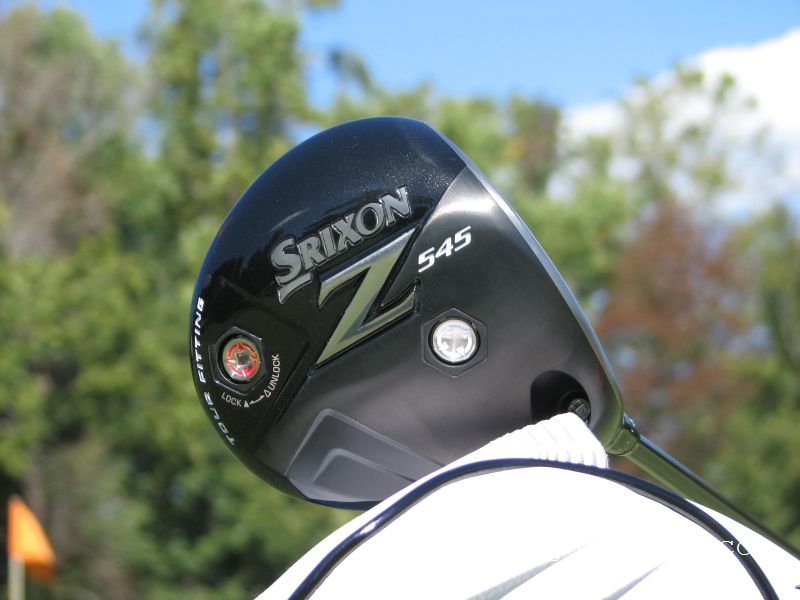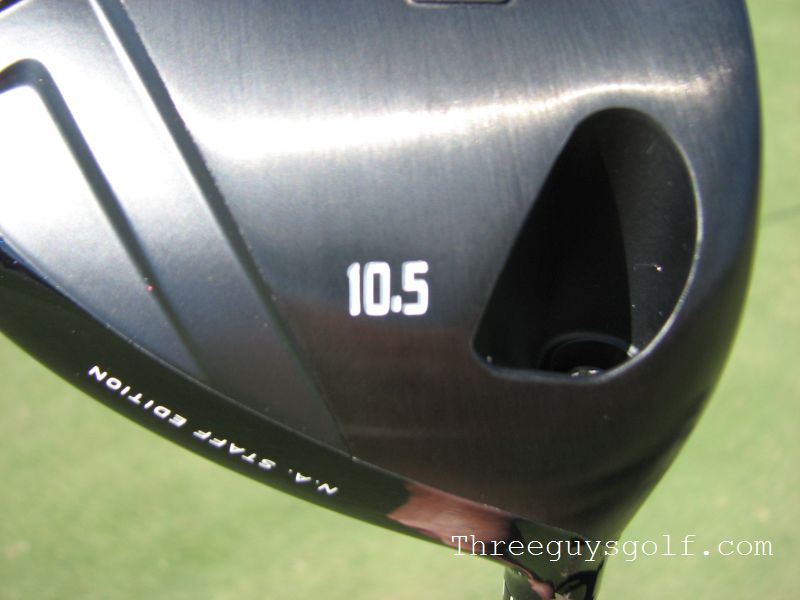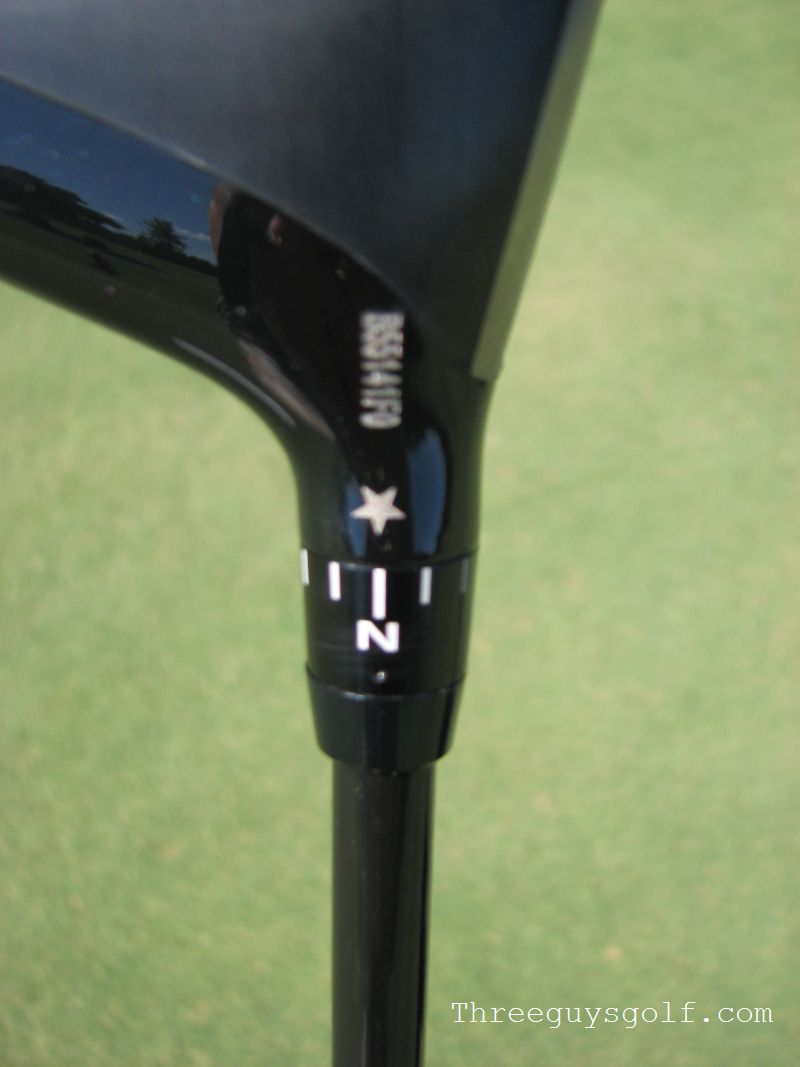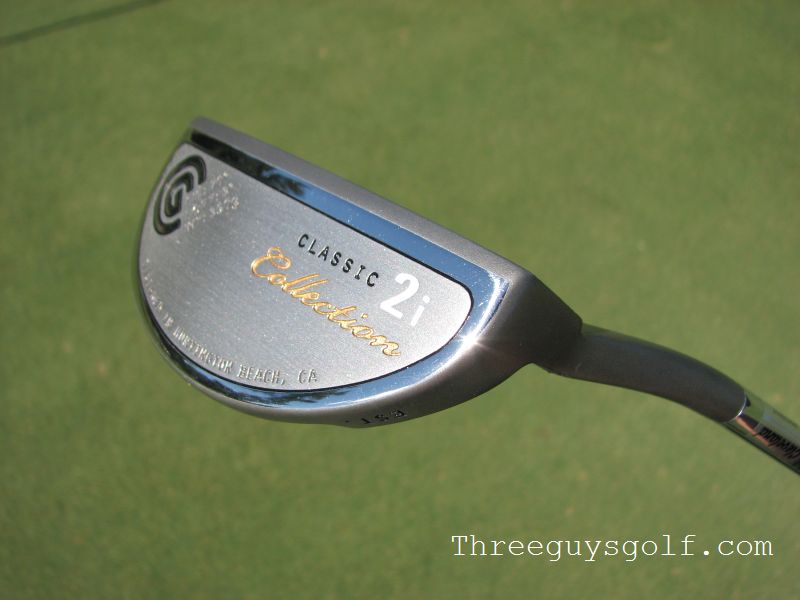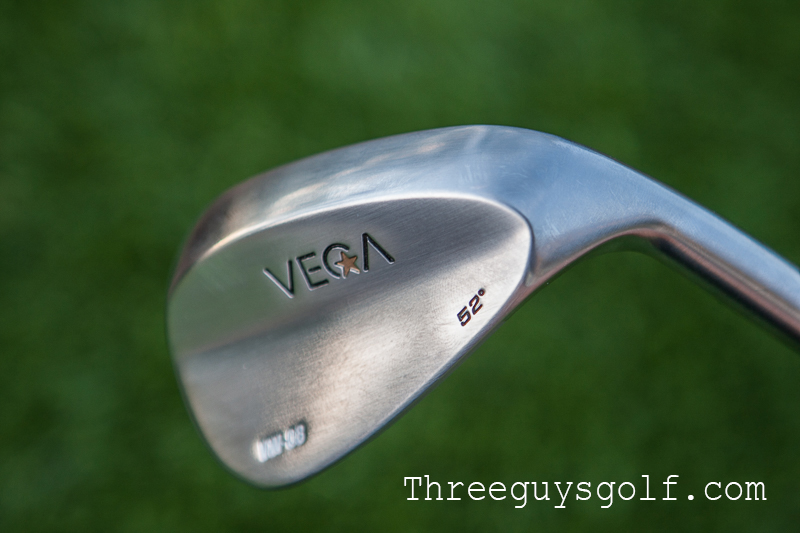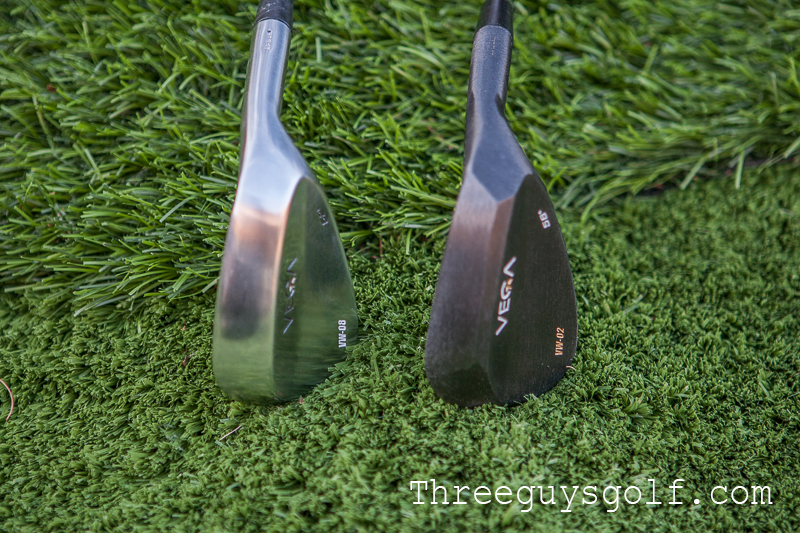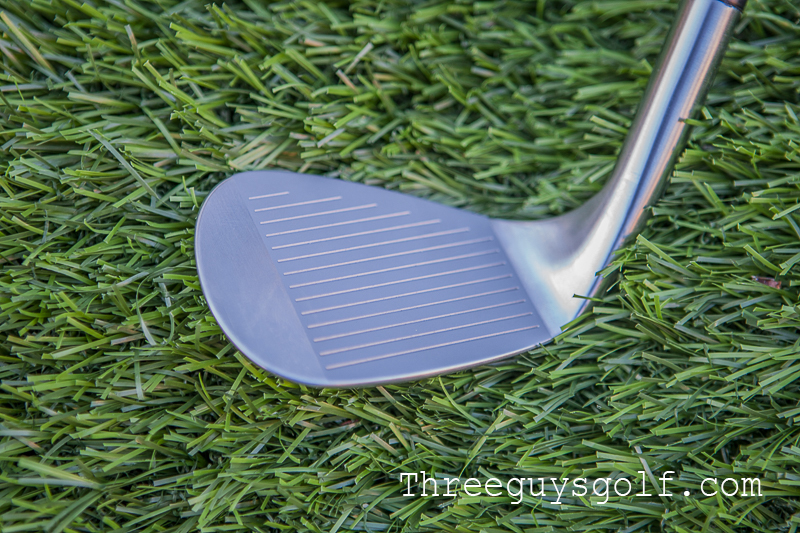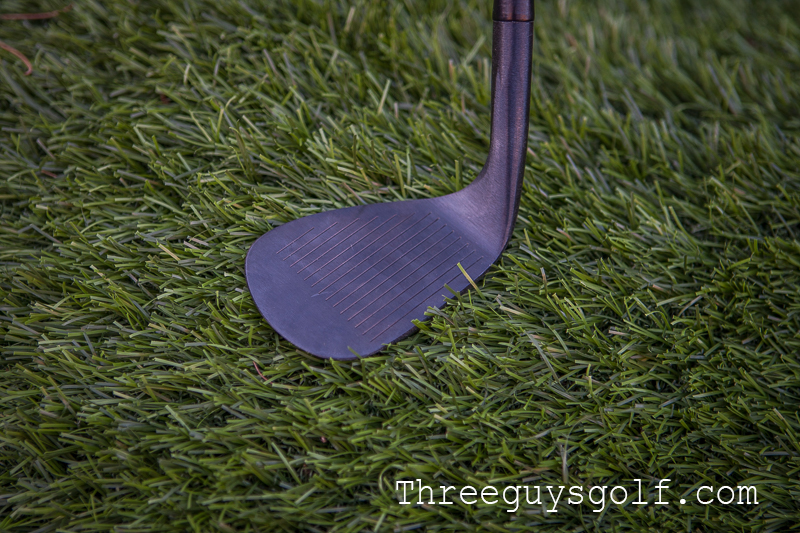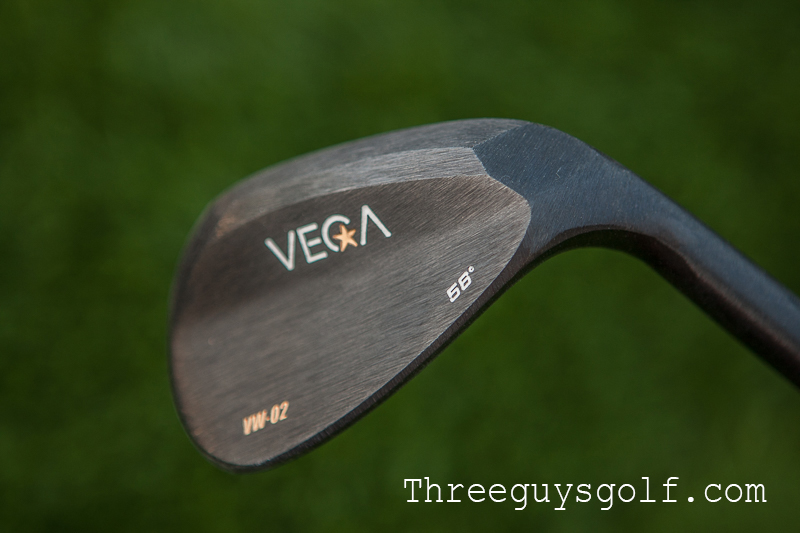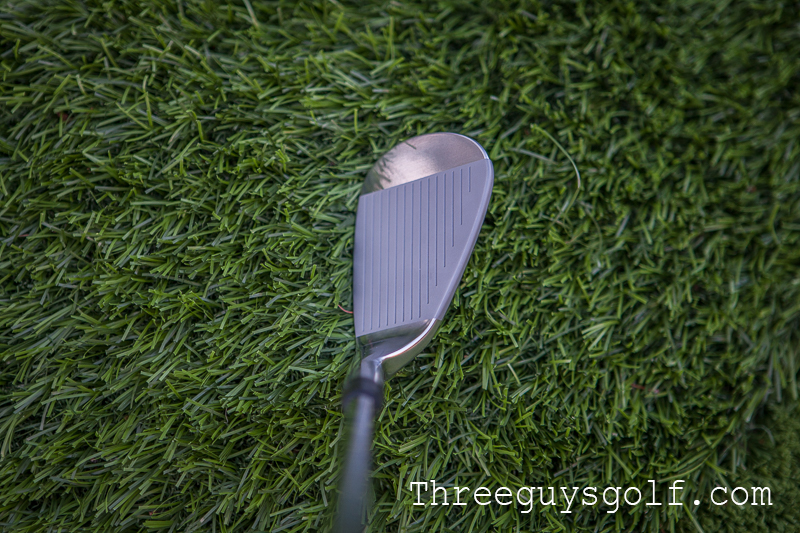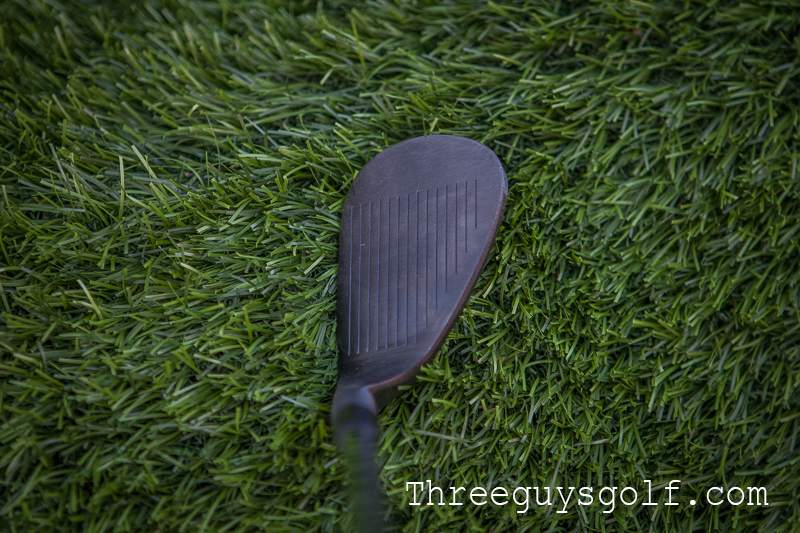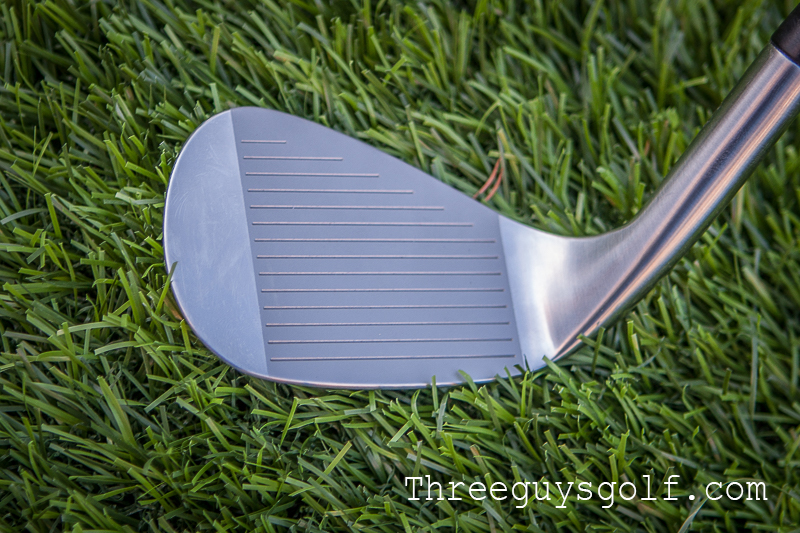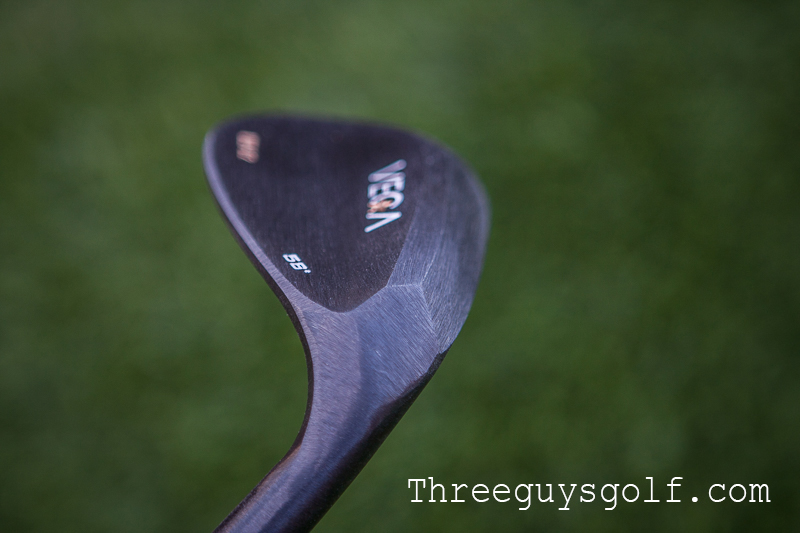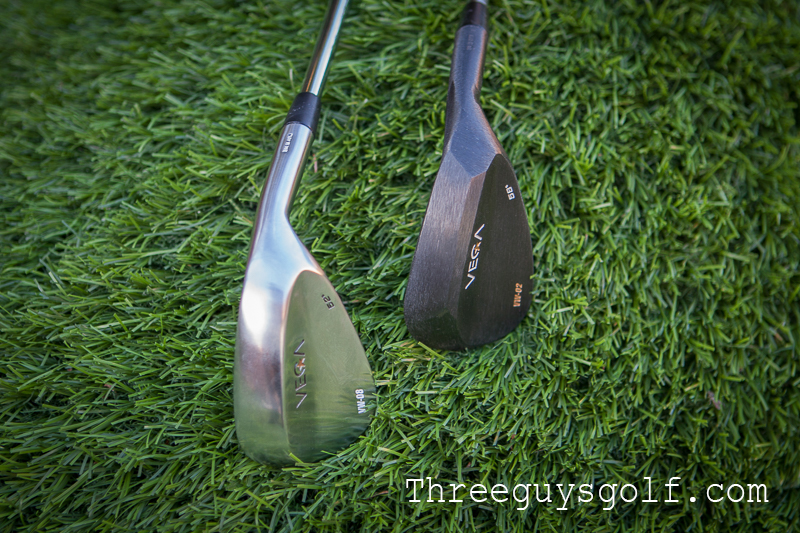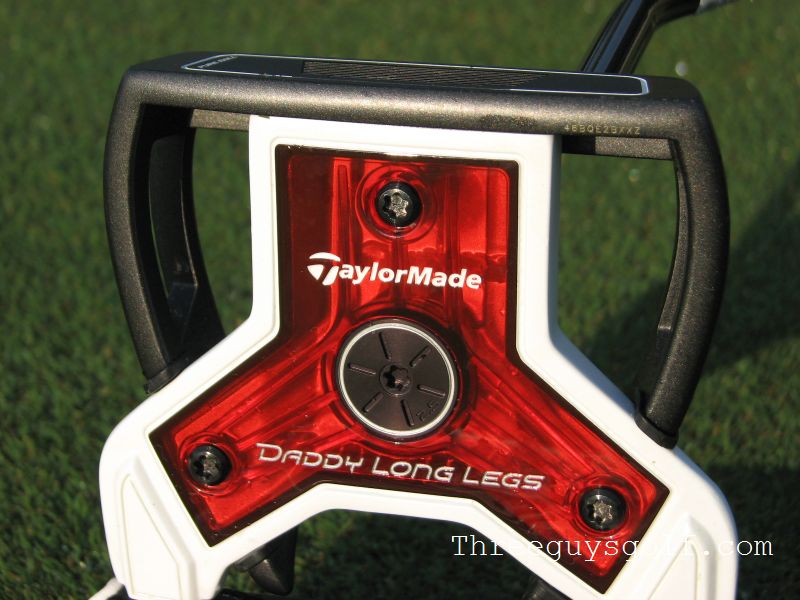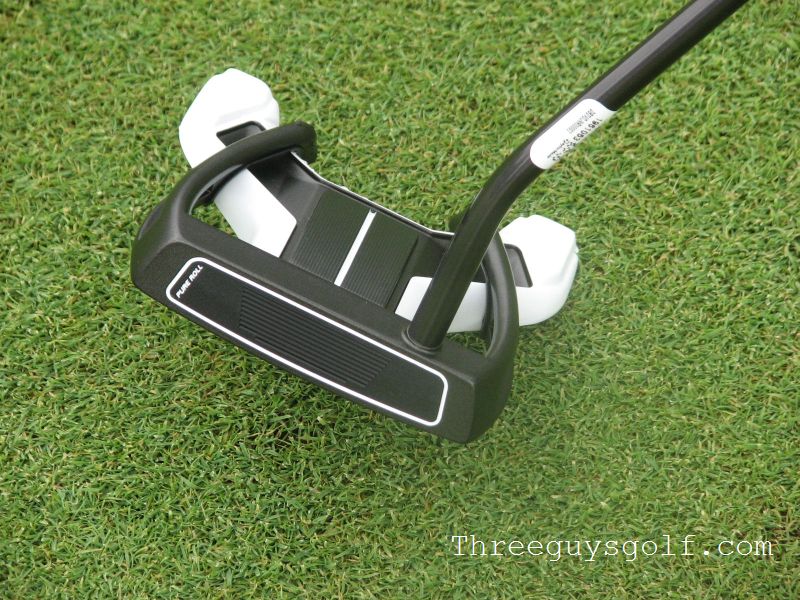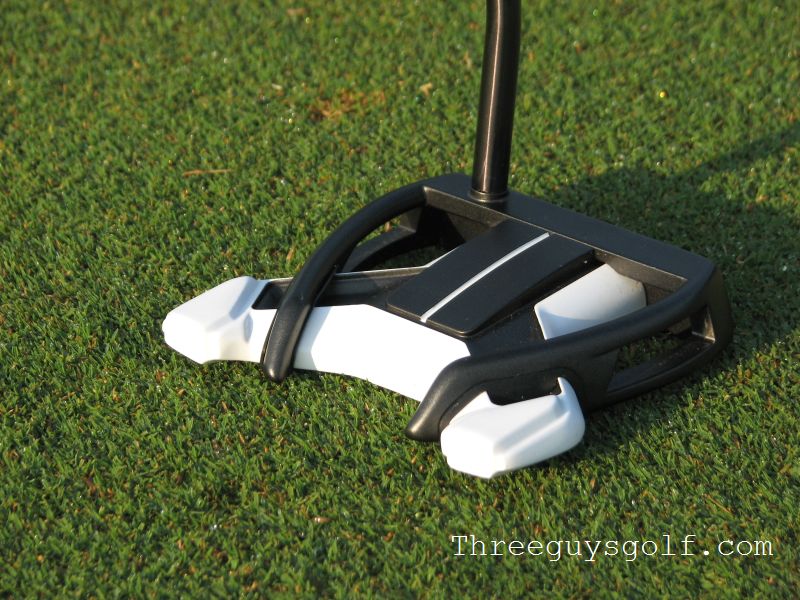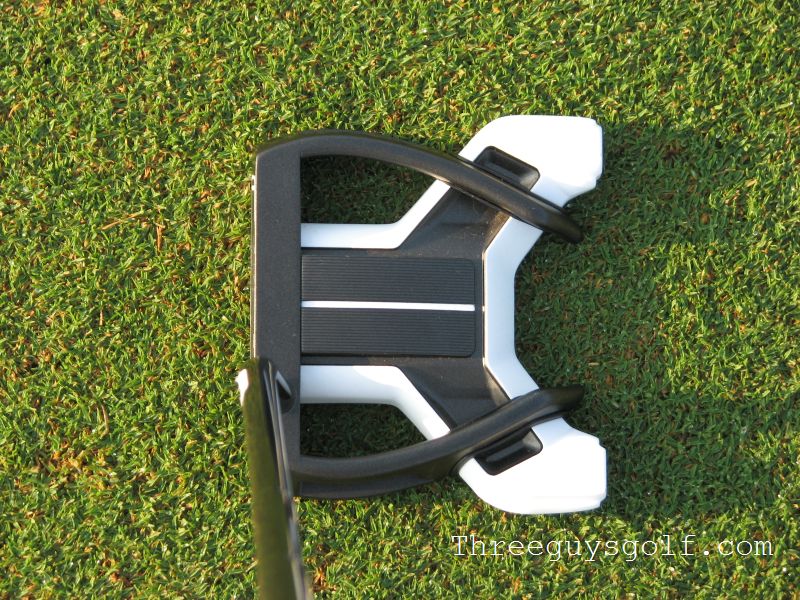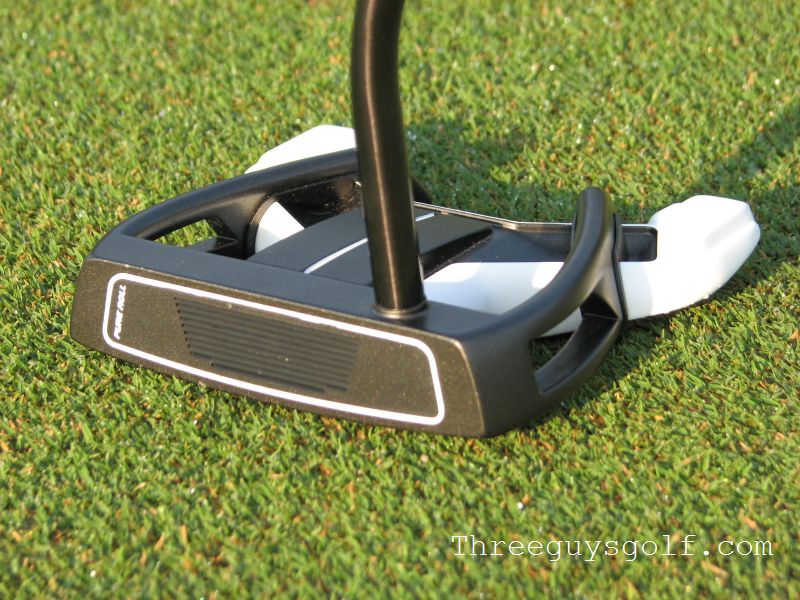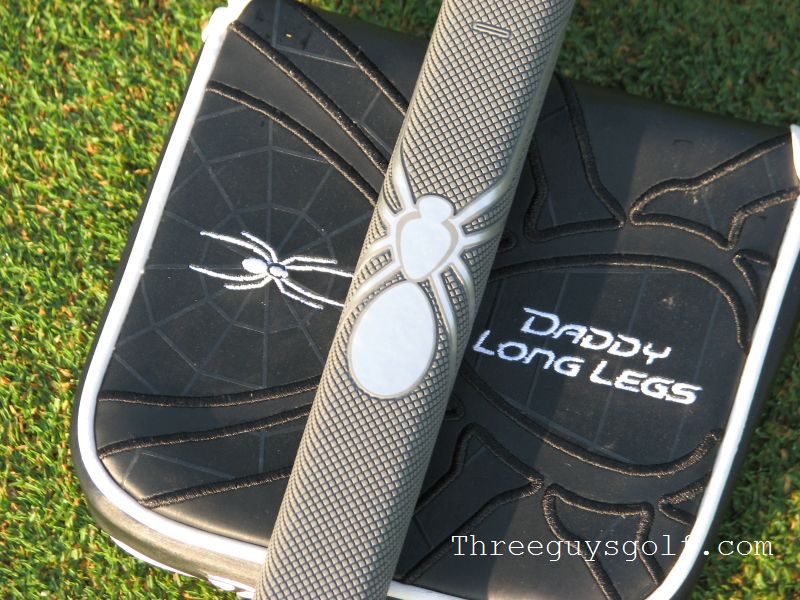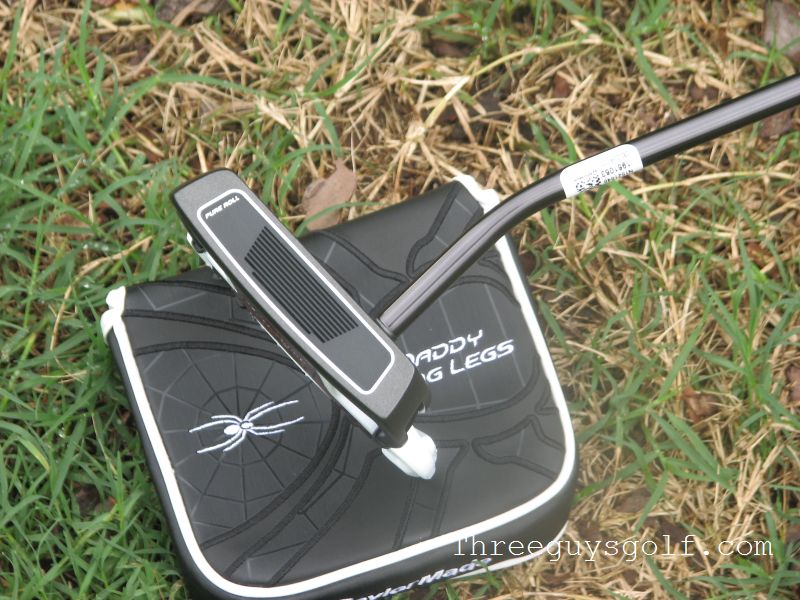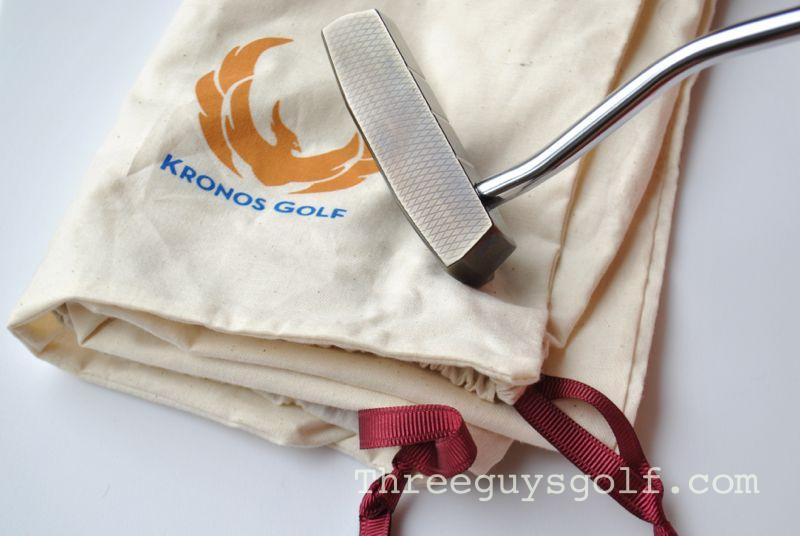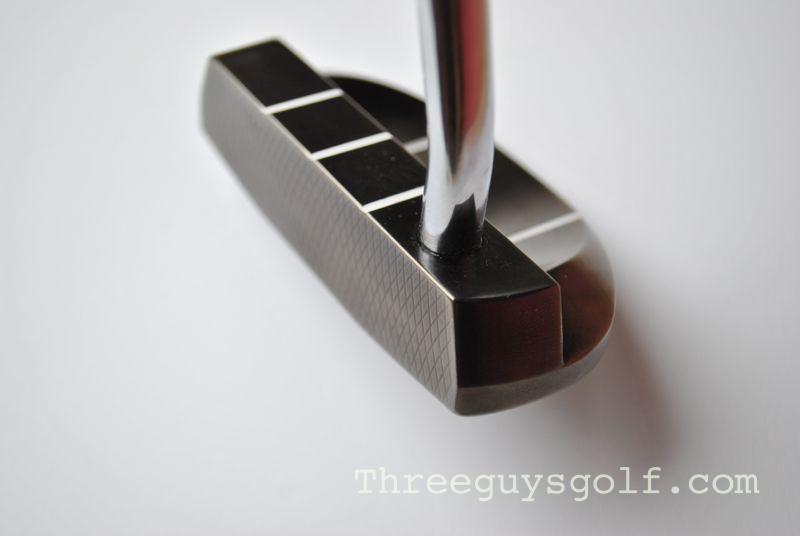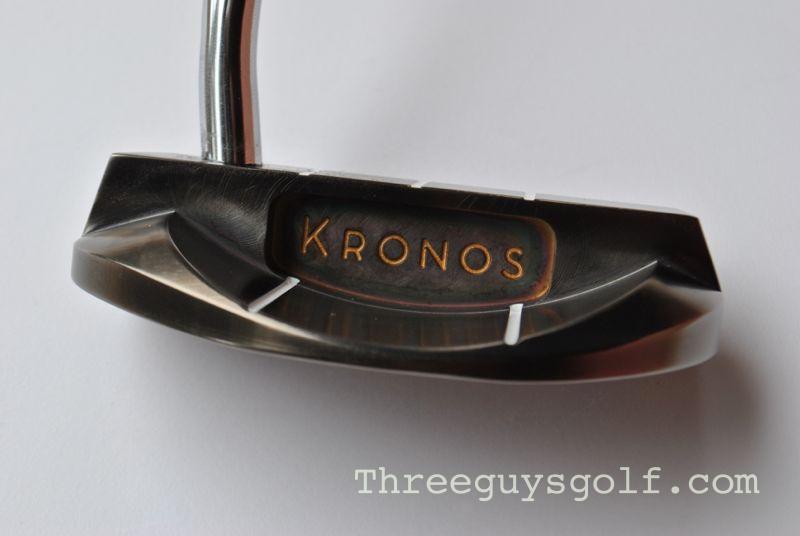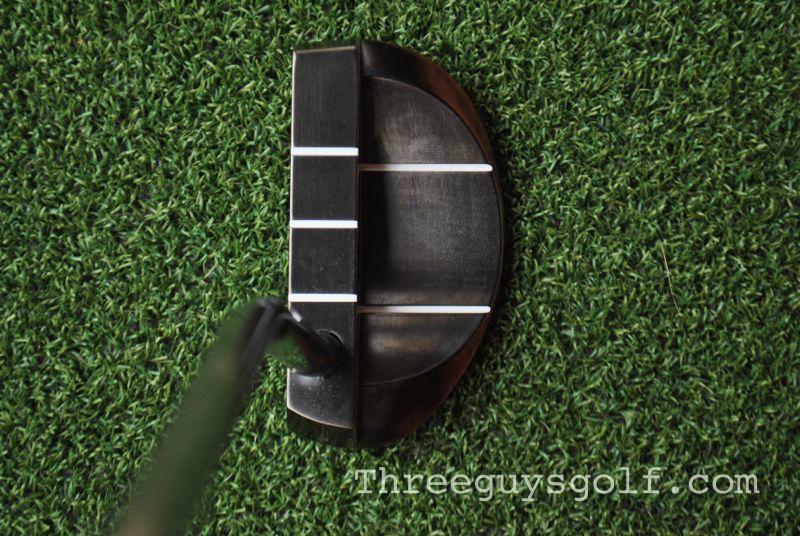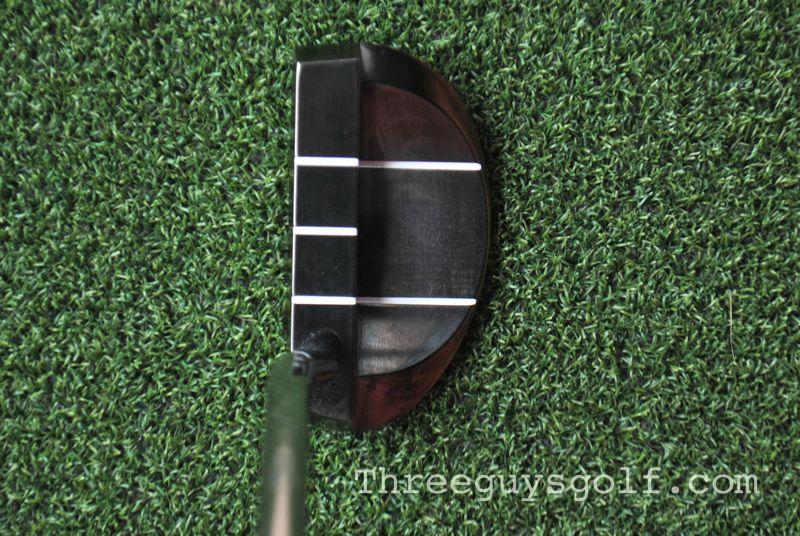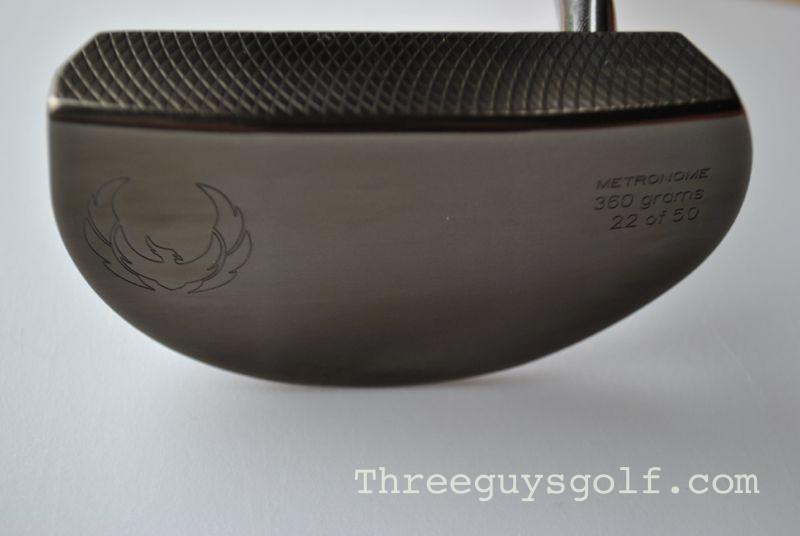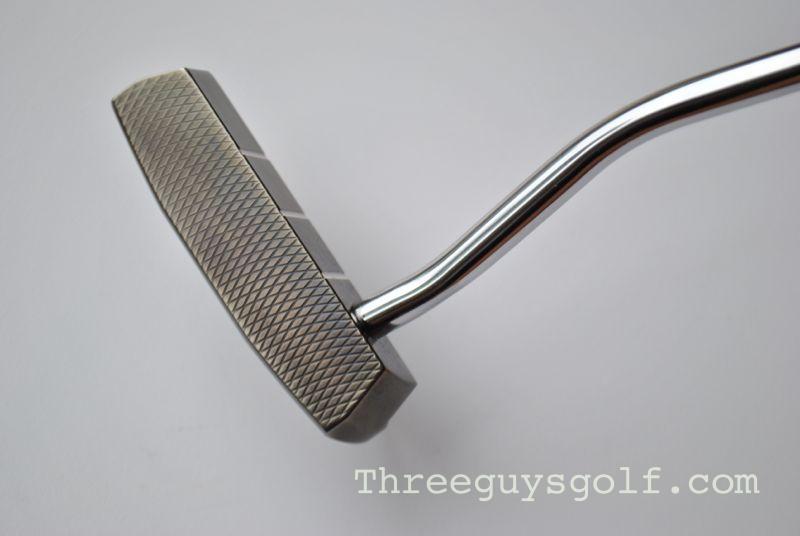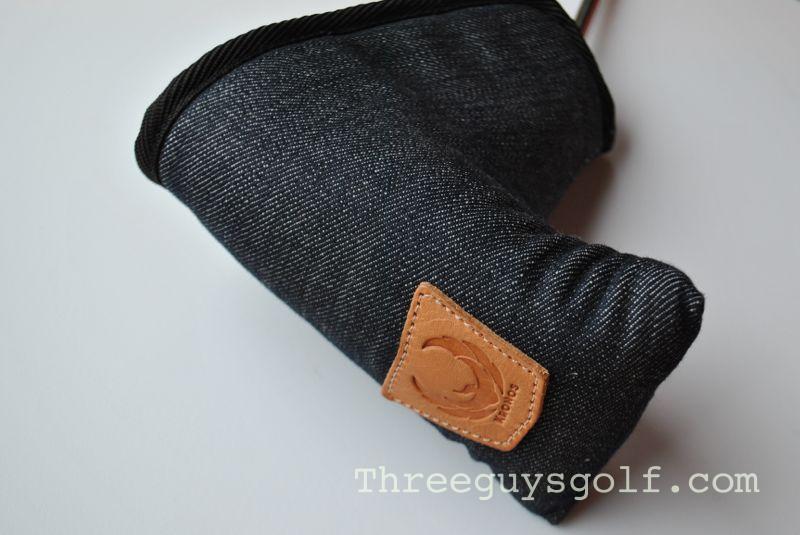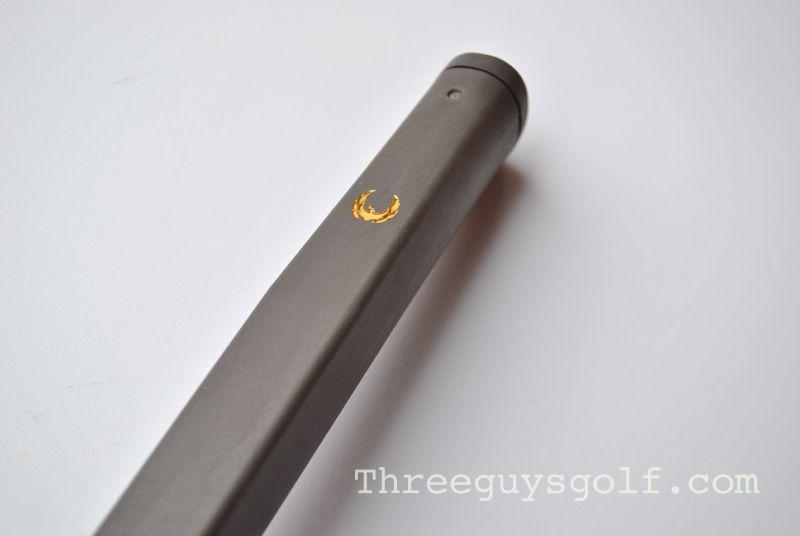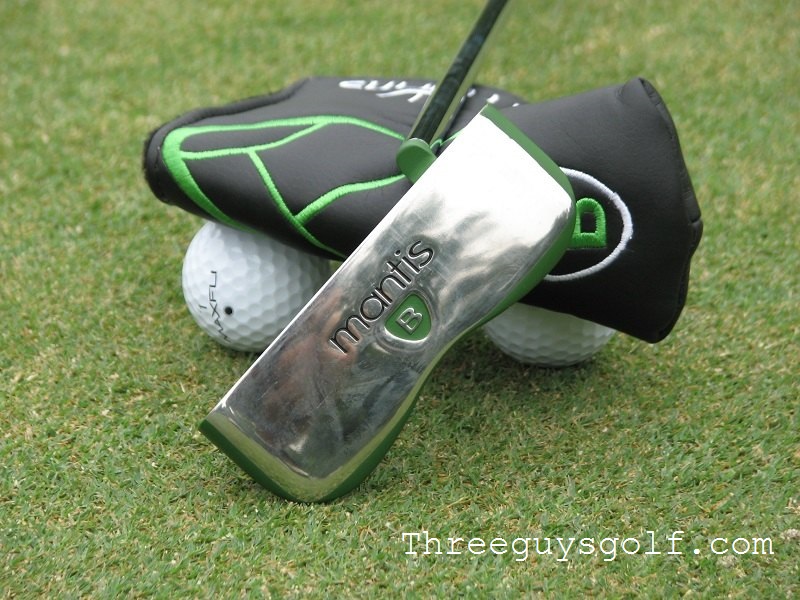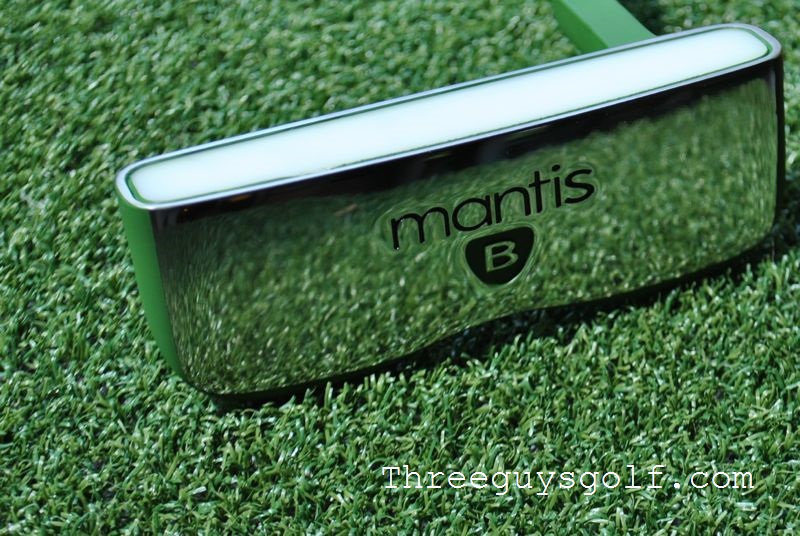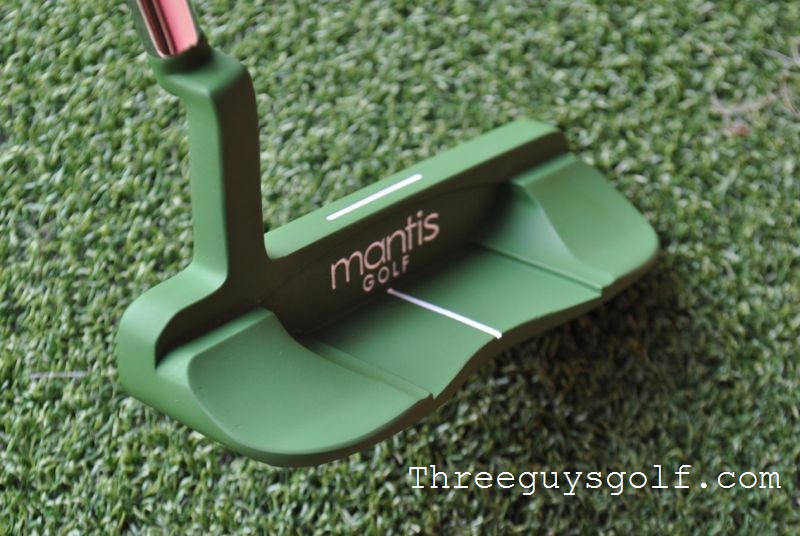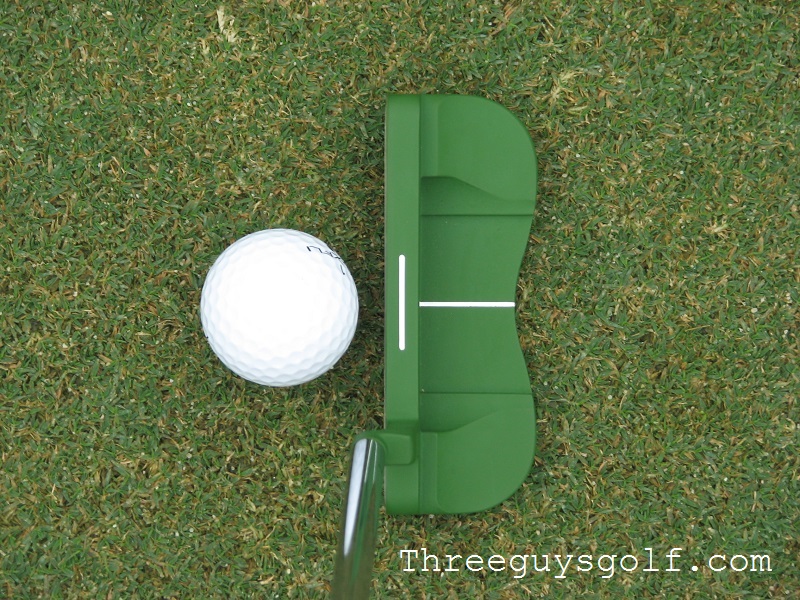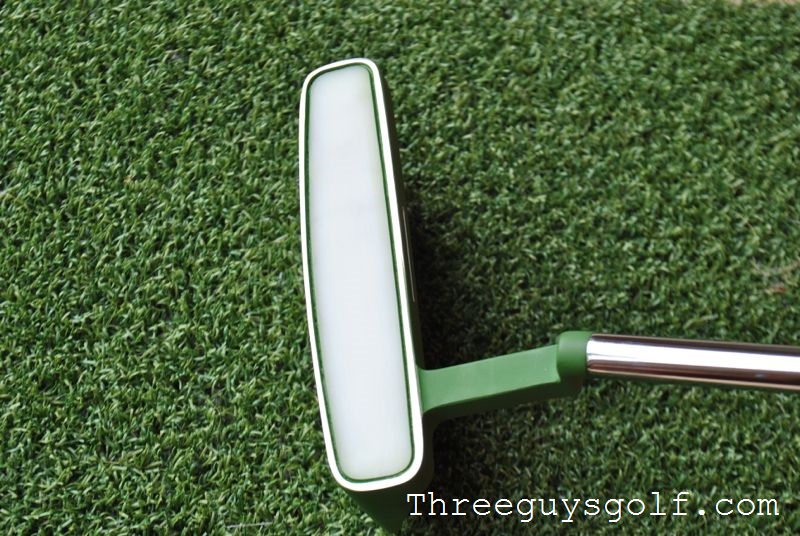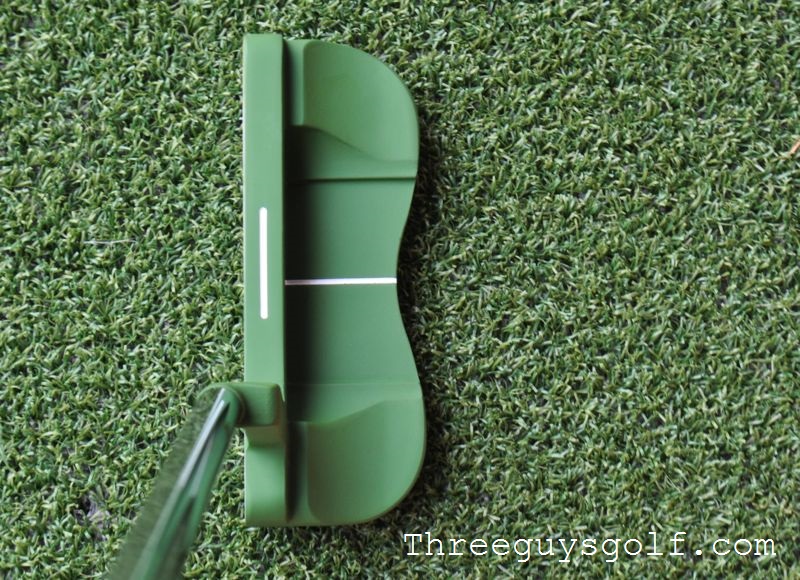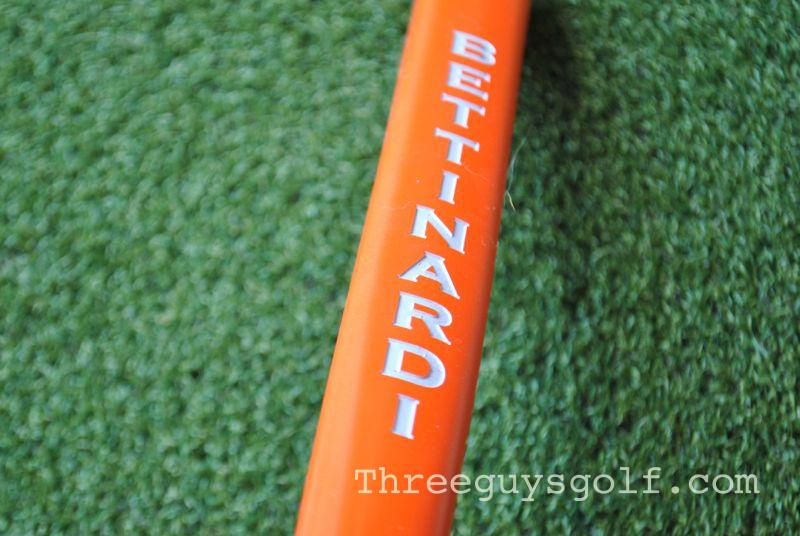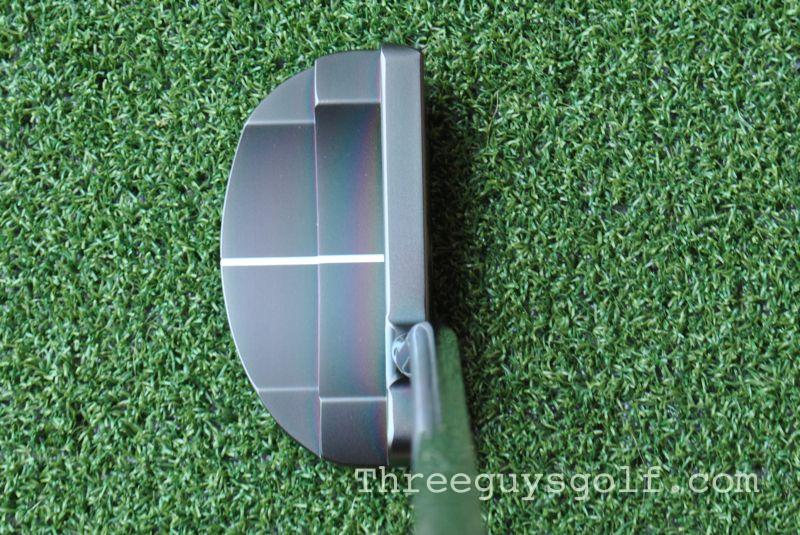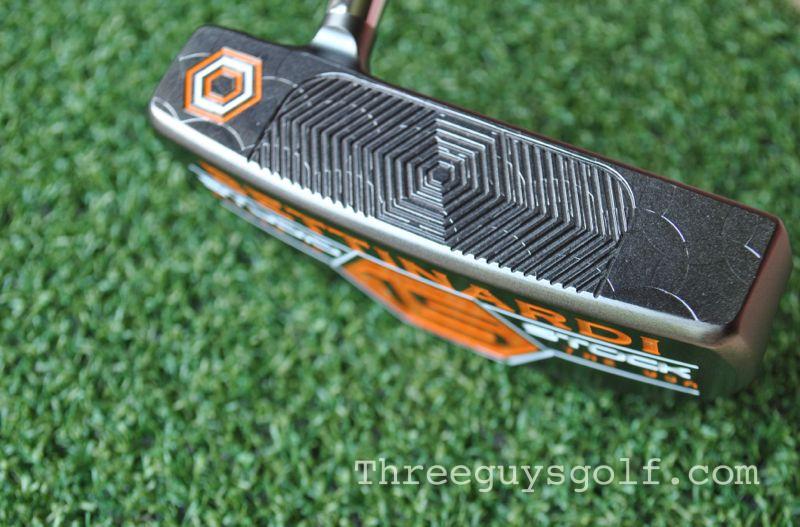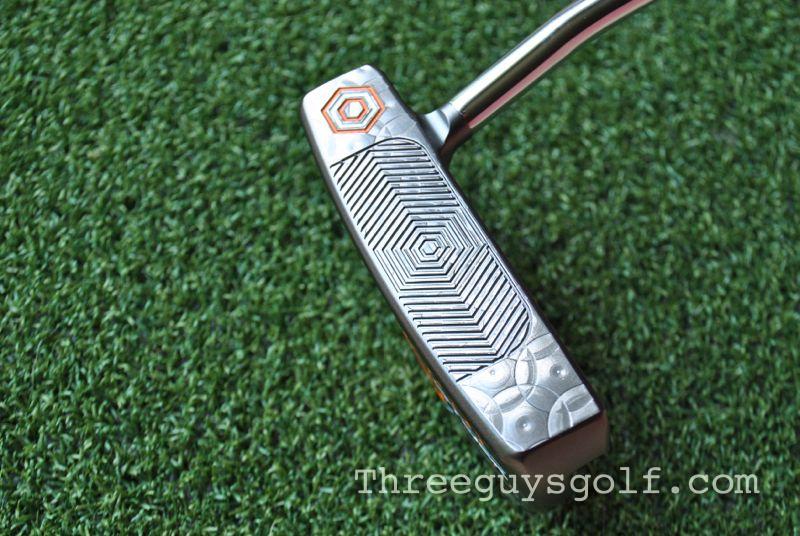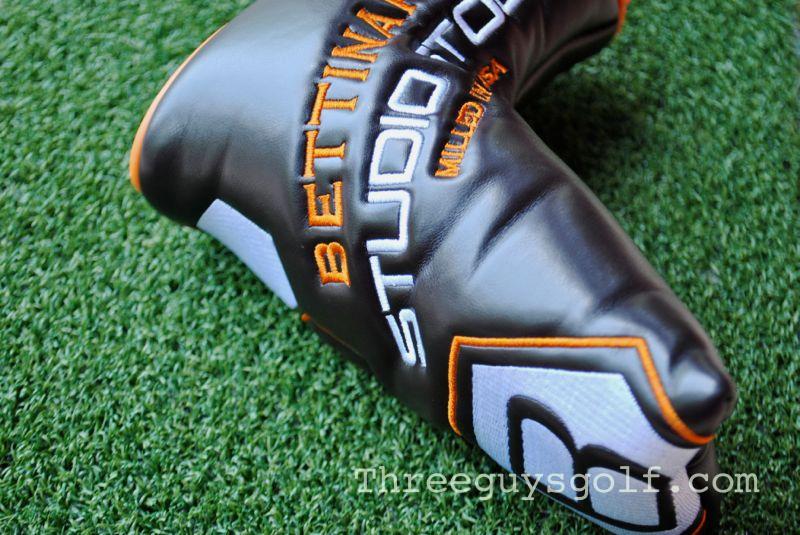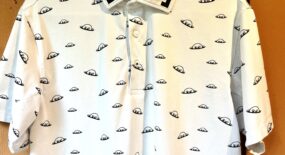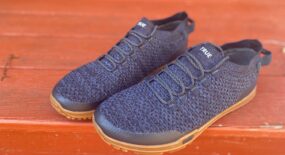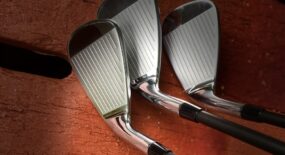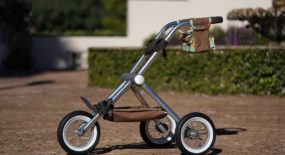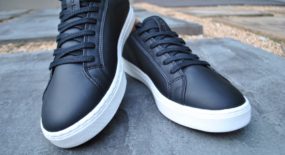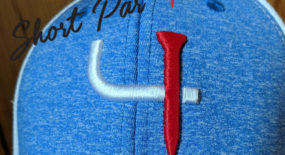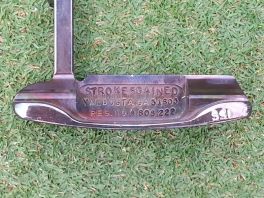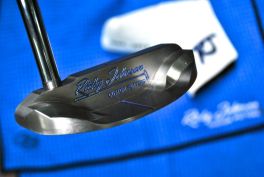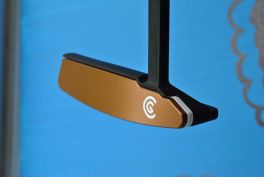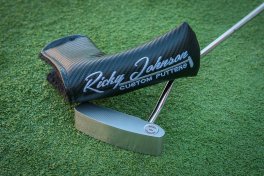There is no similarity between golf and putting; they are two different games, one played in the air, and the other on the ground. – Ben Hogan
How many times have you heard a golfer say “I was hitting the ball well, I just couldn’t make any putts”? How many of your own rounds have left you shaking your head, thinking that if you could have just made a putt – any putt, you’d have had a great round?
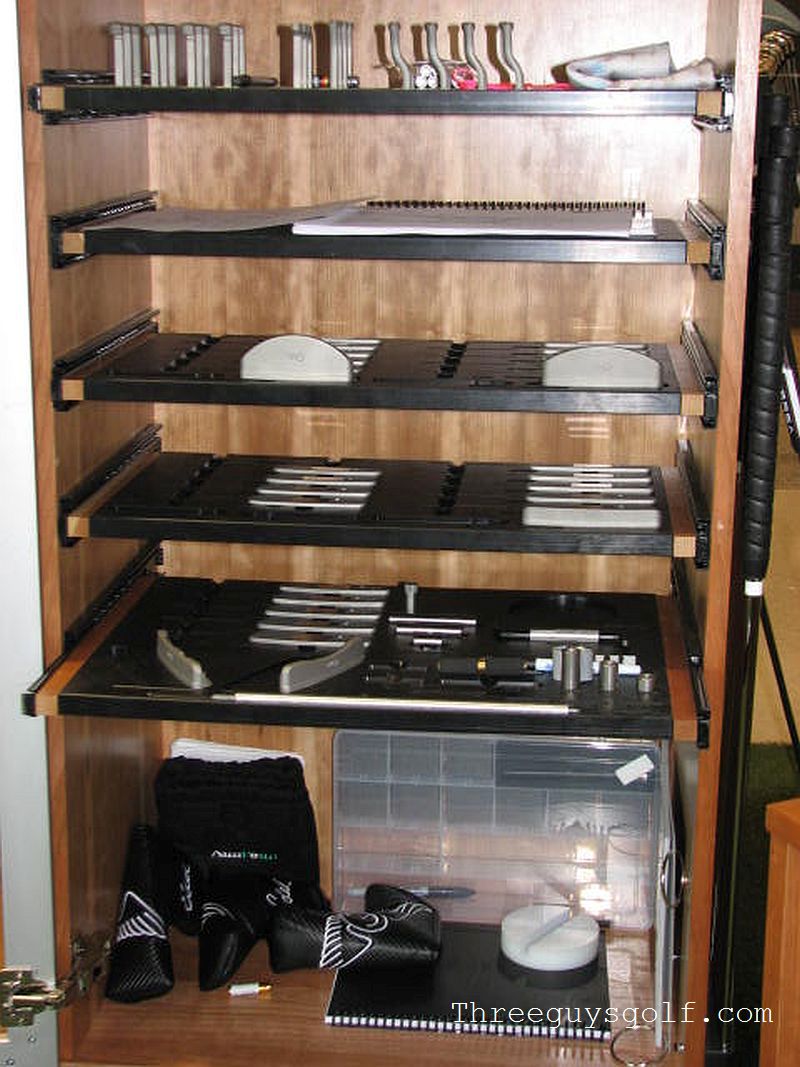
There’s a great round, right here in this box
By my count there are approximately a bazillion different putting aids on the market today. If you’ve played golf for any length of time the odds are good that you’ve tried at least one of these: round grips, fat grips, flat grips, long grips, short grips, putting cross-handed, cross-eyed, cross-legged, or just plain cross; Aimpoint, Aimpoint Express, Dave Pelz, Bob Rotella, and Ty Webb. I don’t have any stats to back it up, but I’d bet everything I’ve ever made as a golf writer that more people have quit golf over their putting than over any other aspect of their game.
Personally, I’m a pretty good putter. I say that because I think that as soon as you think you aren’t a pretty good putter, you’re doomed. The guy that hits it to 6 feet and says “Now watch me three-putt that” is going to do it more often than not. In the immortal words of Tug McGraw, “You gotta believe!”
So if you’re a good putter, but you’re not making putts, clearly the problem is in the equipment! If I had a bad round putting on Sunday, you could usually find me in the shop on Monday auditioning a new flatstick.

“Steve? The ball is over here…”
And that is why, when Edel Golf Director of Business Development and master putter fitter Bobby Dean invited me to come have a putter fitting, I already owned 16 putters in various configurations, lengths, weights, and materials. Worse than that, I had 16 different putting strokes: 15 that matched putters I already owned and one that would drive me back into the golf shop, looking for a cure.
I mentioned all of this to Bobby as he got ready to start my fitting. I was sure that he was going to tell me that I was a basket case and beyond help or hope, but he just smiled and nodded like he’d heard it all before, and told me that he’d fix me right up. A very edifying and informative 90 minutes or so later, he had me believing that he would do just that.
The Fitting
Most of us have, at one time or another, had a putter “fitting.” Your club pro or the PGA pro at a big-box golf retailer sized you up, watched you putt, told you “You’ve got a strong/slight arc/straight back-straight through stroke, you need a blade/mallet/frontal lobotomy, try a few of these and see what feels good.”
For the folks at Edel Golf, that’s not even step one. Bobby taped a mirror to the face of the putter I’d brought with me (Yes! Sandy, 33″ with a Super Stroke Slim grip and strips of lead tape on the bottom) and set up his laser. No, seriously, Edel uses a laser extensively as part of their fitting process, to see exactly where you’re aiming your putter. If you think that’s strange, let me tell you that based on what I saw, you probably aren’t aiming your putter at the hole. Edel uses a curtain behind the “hole”. You line up a putt, they remove the ball, and the laser bounces off the mirror on the face of your putter. I was so far left that Bobby had to move the curtain to find my laser.
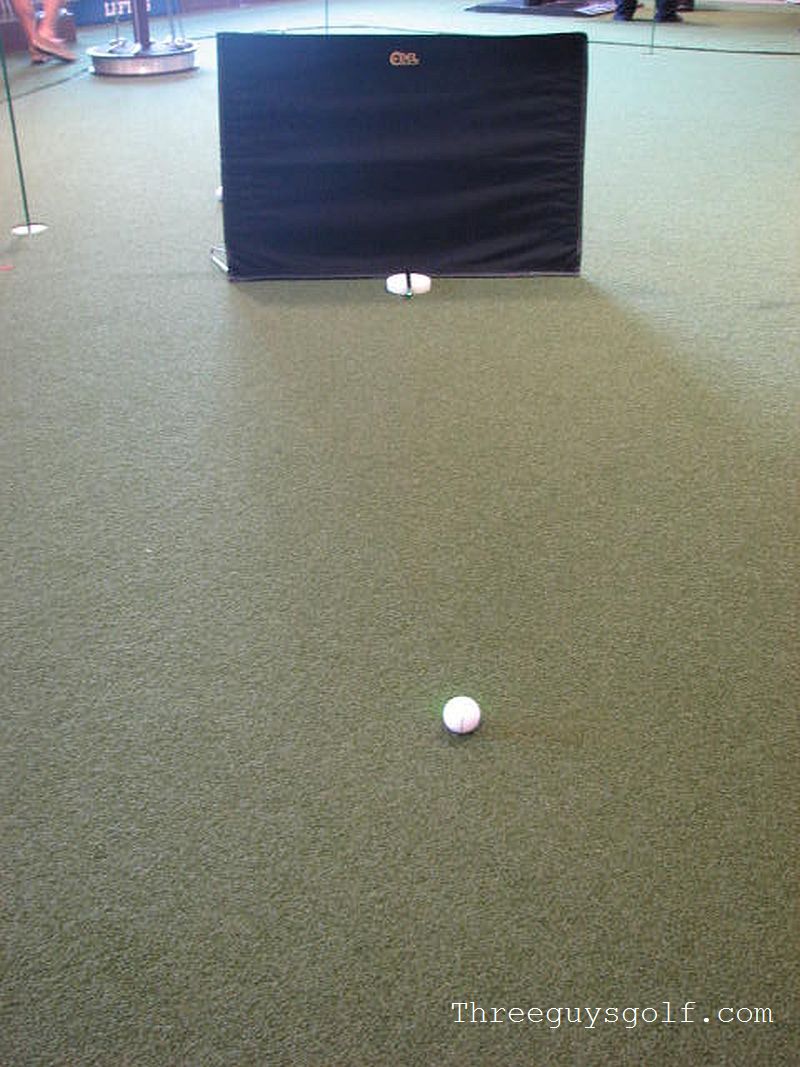
Pay no attention to the man behind the curtain
And with that, we were off and running. With the ease of a man completely in his element, Bobby started combining heads, hosels, shafts, and grips. The Edel fitting cart has 3 million combinations of head, hosel, shaft, loft, lie, weight, and alignment aids. Obviously there’s not time to go through all of them, but all Edel putter fitters are trained in how to quickly find the best head, hosel, and shaft length for you, and then begin fine-tuning with adjustments to loft, lie, weighting, and alignment. The Edel fitting cart is amazing, and Bobby travels the country training fitters to use it systematically. At no time did his hands leave his wrists as he quickly found the best length for me (no surprise, nearly the same 33″ that I was using in most of my putters), then zeroed in on the best head and hosel.
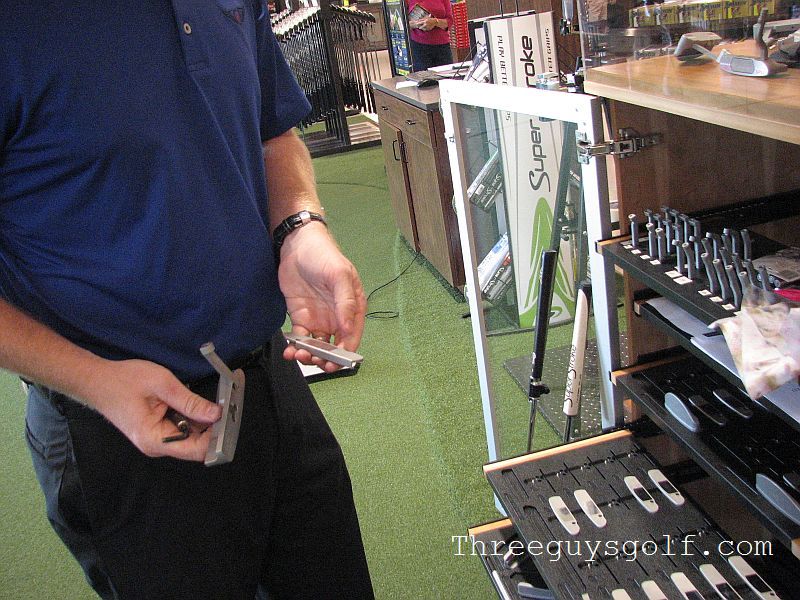
Bobby Dean, doing that voodoo that he do so well
Frankly, I was skeptical. Remember, I already owned 16 putters, ranging from a Ping Anser with a Scottsdale zip code to a Bettinardi for Ben Hogan “Big Ben” with a center shaft and a head that could be seen from space, and I was equally effective with all of them. How big a deal could custom fitting really be?
Then I watched the laser dot move closer and closer to the hole, until finally Bobby removed the ball and there was the dot, right in the hole. So we’re done, right? Oh no, now we can really get started. Bobby ran me through different combinations of loft and lie, then started balancing the putter by adding weight at different points in the shaft. Finally, he used a marker to test different combinations of alignment aids, finally settling on a single line on the top strap. I couldn’t believe how much difference just changing from 1 alignment line to 3, or moving lines from the strap to the flange made in how I aligned the putter.
Finally came speed, because in the Edel philosophy, good aim is worthless without good speed. Speed has always been the bane of my putting. When I 3-putt, it’s because my first putt put too much pressure on my second putt. A few adjustments and an impromptu putting lesson later (“You ever lose a ball on the putting green? Then keep your head down.”) and I was clustering all my putts within a couple of inches of the bright pink string that was my target.
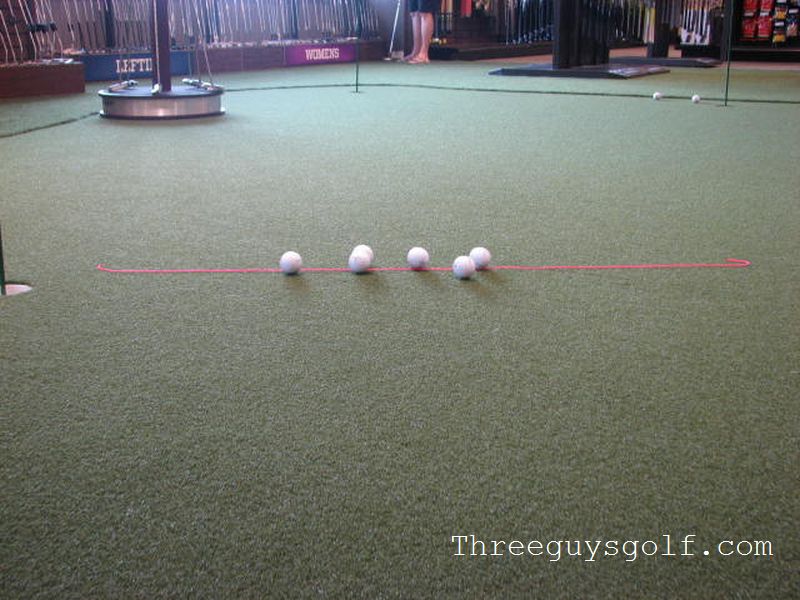
Because I’m all about that pace, ’bout that pace…
Then came the goodies. Bobby transferred all of the data to build my personal putter to an order form. Then her turned to me and said: “Want us to stamp your name on the face?”
Hell yes I want you to stamp my name on the face!
“What color paint fill do you want?”
What color paint fill? Have I died and gone to heaven?
Finally the details were all attended to, and there was nothing left to do but wait.
You take it on faith, you take it to the heart.
The waiting is the hardest part. – Tom Petty
Something else you need to be prepared for: you aren’t going to go home from your Edel fitting with a putter in your hands. Instead, the Edel folks in Liberty Hill, Texas take all of the information that your fitter so carefully collected and the build a bespoke putter to fit you, and only you.
And they’ll even stamp your name on it.
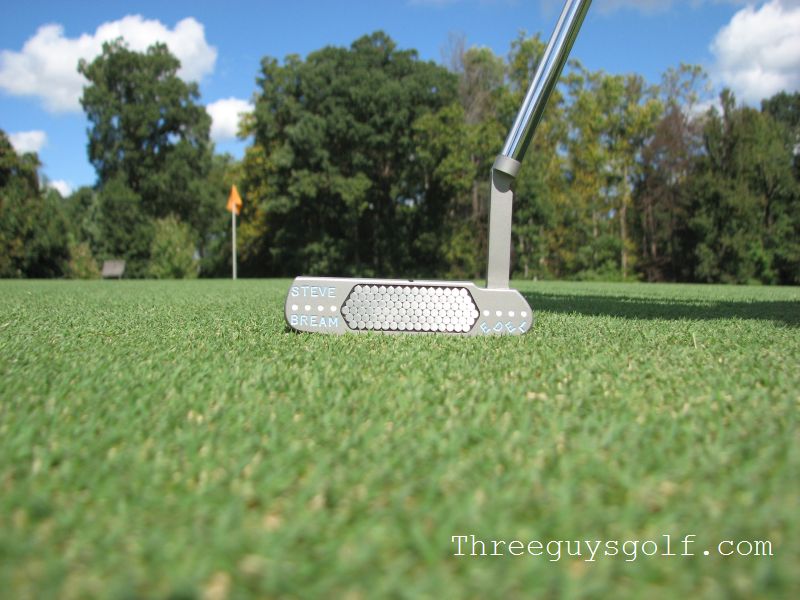
What’s my name?!?
The Putter
You know what the worst part of getting fit for your very own custom Edel putter is? It’s trying to get through the next 4 weeks knowing that the putter you’re using is all wrong for you.
I dug through my collection of putters and found the one that most closely matched the head shape and offset Bobby had shown were optimal for me. I even putted a bit better for the next few weeks, which I attribute more to Bobby’s putting lesson than to any vestigial similarity between the interim putter and MY putter.
And then MY putter came. Columbia head (the biggest one Edel makes), no offset hosel, lieing 68 degrees with 3 degrees of loft, 33 inches long with weights 3″ from the top and 4″ from the bottom, Edel’s Pixel insert, and both my name and Edel’s stamped on the face in Carolina Blue and White.
It’s a very satisfying piece of gear. Substantial, but so well balanced that it doesn’t feel heavy. The lines are clean and nicely radiused. This putter head wasn’t cast in a mold, it was machined by a guy in Liberty Hill who loves making things out of metal. The head and hosel are hand-finished, the Pixel insert is assembled by hand, the stamping is all done with a set of metal stamps and a mallet. There is nothing gaudy about this putter. No flashy graphics, no eye-popping colors, no hyped technical claims. It has the same aura of quality you’d find in a hand-built car, or custom furniture. This is a putter with nothing to prove.
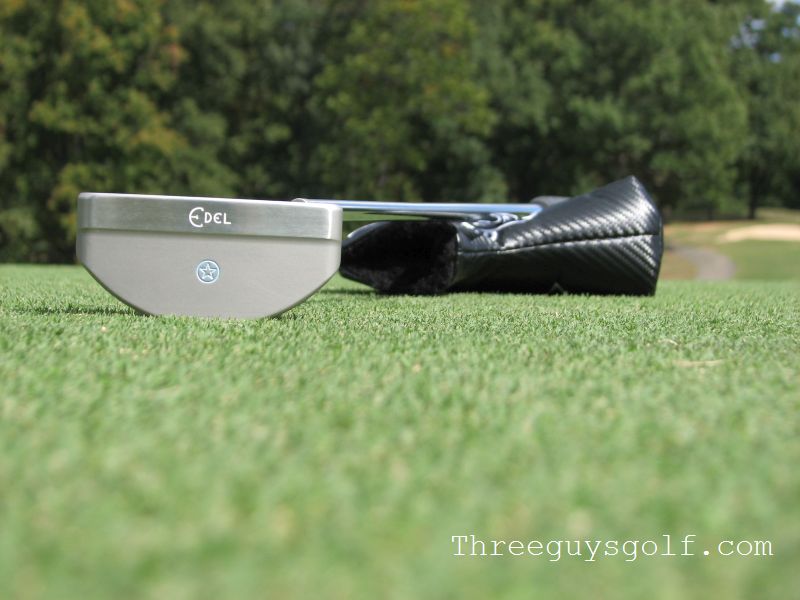
Once, when I was struggling to play a new piece on guitar, my instructor handed me his hand-built Martin. “I’m not a hippy,” he said, “but I swear it’s like this guitar knows what you want to do, and it wants to help.” That’s exactly what an Edel custom putter feels like. Your Edel is literally built for your stroke, which makes swinging it feel effortless. I don’t have to remember a dozen tricks to make my putter work, I just… putt.
When you can just putt, you can focus all your attention on getting the correct line and pace. It took a good bit of practice before I could just let go and swing the putter, but the difference in my game is second only to the difference in my psyche. I used to consider 6′ to be the break-even point. Outside 6′ I figured that I had less than a 50% chance of actually making a putt. Now I’m disappointed when I miss 15-20 foot putts, particularly if it’s by more than a foot or so. Instead of grinding over 4-footers for my second putt I’m walking up and tapping them in. No matter how far I am from the hole, if I can use my putter I’m confident that I can get down in two. Golf is fun again.
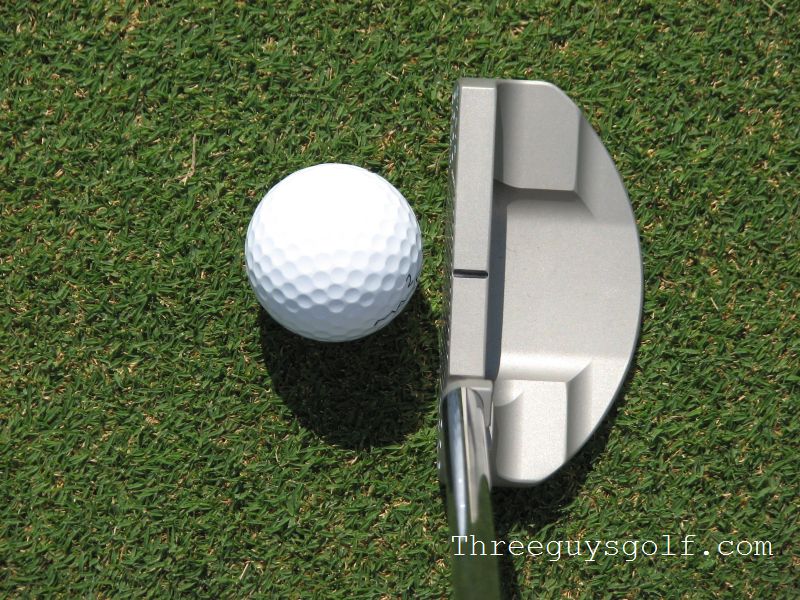
The Net
Edel believes that there are two parts to the perfect putter – fit it to you, and build it perfectly. Just going through the Edel fitting process improved my putting by showing me very clearly what I was doing wrong, and how. If I’d stopped there it still would have been well worth the time and money, but to use a putter that’s actually custom fit to you is an epiphany. I don’t want to say that it’s easy, but it inspires confidence like nothing else. When I stand over a putt, I know that I can swing my swing, and if I’ve read the putt right and hit it properly, it’s going in.
It is so choice. If you have the means, I highly recommend picking one up. – Ferris Bueller
Edel putters are not inexpensive. A lot of time goes into fitting one to your stroke, CNC-milling, hand-finishing and assembling it, and delivering it to a grateful world. But an off-the-rack putter isn’t inexpensive either. If an off-the-rack putter that’s “fit” for you based on nothing more than your height and a vague idea of your stroke is worth $250, surely a bespoke putter that’s custom-made for you and you alone is worth significantly more.
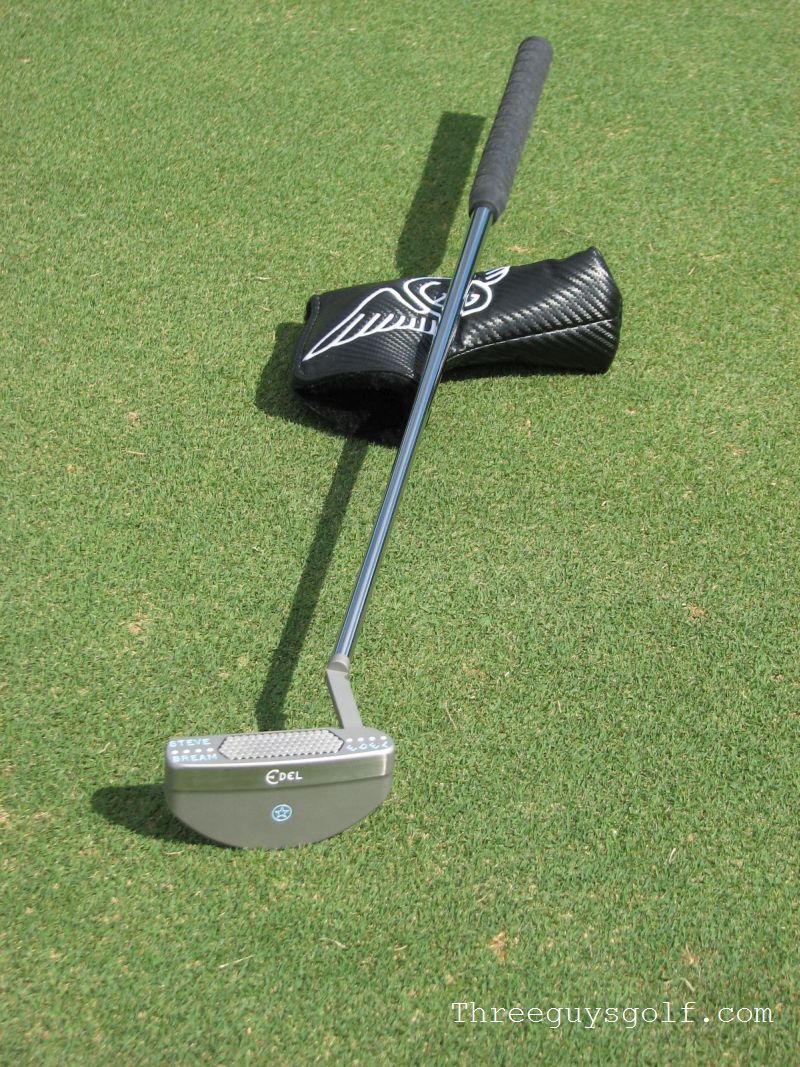
And they’ll even put your name on it for you.
You can find an Edel fitting professional near you, learn more about all the love that goes into an Edel putter, and watch some really cool videos on the Edel website.


